Indianapolis Motor Speedway: The Complete Guide
:max_bytes(150000):strip_icc():format(webp)/AmyLynchheadshot-2b8e329287ed4758adeb722a5df1b394.jpg)
Ladies and gentlemen, start your engines! The storied Indianapolis Motor Speedway is hallowed ground where history is made and racing legends are born. For those who can’t get here on Memorial Day weekend to experience the race itself, there are still plenty of ways to experience this iconic landmark all year long. Here’s what to know before you go.

History and Background
The first Indianapolis 500 took place in 1911, when Ray Harroun piloted the Marmion Wasp to victory at an average speed of nearly 75 miles an hour. IMS facilities have certainly evolved through the decades to keep pace with technological advances; along the way, they have added events like the Brickyard 400, Formula One World Championship rounds, the United States Grand Prix, motorcycle racing, and air shows to accommodate fans of different stripes.
Hulman & Company announced the sale of the Indianapolis Motor Speedway in November 2019 after 74 years of family ownership. They sold it to Penske Entertainment Corp, a subsidiary of the Penske Corporation transportation services company that has deeply respected ties to the property.
Seating at the Indianapolis Motor Speedway hovers around 250,000, with an expansive infield area that brings the total capacity up to approximately 400,000 people. Factor in a global viewing audience of millions, and it’s easy to see how the Indianapolis 500 capably ranks as the largest single-day sporting event in the world.
The area inside the oval track clocks in at several hundred acres—for sheer scope, that’s big enough to comfortably fit the Rose Bowl, Churchill Downs, the Rose Bowl, Wimbledon, and Yankee Stadium with room leftover to spare.
Although the Indianapolis 500 logically covers 500 miles, the track itself is two and a half miles long, requiring 200 laps in total.
How to Visit the Indianapolis 500
The Indianapolis 500 always takes place on the Sunday prior to Memorial Day. Plan to make a day of it and don’t get in a hurry. Traffic can be brutal and road closures are to be expected; allow more time than you think you’ll need to park and make your way in. Many attendees opt to shell out a few bucks to park their vehicles in a neighborhood front yard and walk in. Glamping, RV, and tent camping sites are also available in the infield and in lots surrounding the speedway. Alternatively, you can take a shuttle to and from Speedway for $60; Race Day shuttles pick up passengers at both the Indianapolis International Airport and downtown near Lucas Oil Stadium.
Visitors can bring in food and drink, or purchase on site from any number of vendors. By way of dress code, anything goes, but black and white fashions are always in style. Just remember to wear comfortable shoes and don’t forget your ear protection. Race cars are loud!
Indiana weather can be unpredictable. If there’s any chance of rain, pack a poncho. Otherwise, load up on sunscreen, pace yourself when it comes to alcohol consumption, and stay hydrated.
If you plan to attend, you can purchase your tickets on the IMS website ; tickets start at $35.
Indianapolis 500 Events in May
If you can't attend the Indy 500, the city celebrates the spirit of the race the entire month of May . The OneAmerica 500 Festival Mini-Marathon kicks off the festivities on the first Saturday in May; participants run a course to and from downtown, even taking a lap around the Speedway track.
Visitors are welcome to bring in box lunches and grab bleacher seats to watch race practices throughout May. Carb Day, the last session held on the Friday before the race, is followed by a pit crew competition and a concert. Tickets for the event start at $30. Other popular race-related events include the 500 Festival Parade, a kids’ day, a memorial service, and the Snakepit Ball.
Check the IMS website for the full schedule of events.
Other Events and Experiences
Brave visitors with a serious need for speed can arrange a two-seater ride around the track at speeds of up to 180 miles per hour through Indy Racing Experience .
Beyond a packed seasonal schedule of races, practices, and other events, IMS has been featuring a holiday “Lights at the Brickyard” tour since 2016. During this festive event, the facility is decorated with more than three million lights and displays along a two-mile course, which takes guests through the infield and down a portion of the track.
Indianapolis Motor Speedway Museum
Inside the oval at the southern end of the track, the Indianapolis Motor Speedway Museum is a good place to orient and educate yourself about all things IndyCar; displays detail IMS history and exhibits boast race cars past and present. Make sure to marvel at the esteemed Borg-Warner Trophy featuring the carved faces of winning Indy 500 drivers.
The museum is also where guests can sign up for track tours with pit stops at Gasoline Alley, Pagoda Plaza, and the Yard of Bricks. Make sure you kiss the bricks—it's track tradition for race winners to pucker up at the start/finish line.
Things to Do in Speedway
Speedway’s short stretch of Main Street just beyond the southwest corner of the IMS proposes territory for shopping, drinking, and dining. Look around: You might just find yourself rubbing elbows with drivers, owners, and other racing bigwigs at Dawson’s on Main , Barbecue and Bourbon , and Charlie Brown’s Pancake & Steak House . Big Woods and Daredevil Brewing Co. offer creative ways for craft beer lovers to wet their whistles, while wine drinkers can sample the wares at Foyt Wine Vault .
The Dallara IndyCar Factory provides an up-close look at the engineering and technology that goes into creating contemporary race cars. Or, put your own pedal at the medal at Speedway Indoor Karting .
The Best Time to Visit Indianapolis
Your RV Guide to Las Vegas Motor Speedway
Indianapolis Guide: Planning Your Trip
Your RV Guide to Talladega Superspeedway
10 Museums to Visit in Indianapolis
11 Best Things to Do for the Kentucky Derby in Louisville, Kentucky
This New Boutique Hotel in Indianapolis Celebrates All Things Indy
Planning Your Trip to Daytona Beach
Your RV Guide to Texas Motor Speedway
The Best Small Town in Every State
A Car Enthusiast's Guide to Italy's Motor Valley
Venice Canals in Los Angeles: The Complete Guide
The Top 10 Neighborhoods in Indianapolis
Things to Do in Indianapolis in October
Reasons to Visit Indianapolis
Things to Do in Sonoma, California
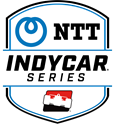
- How to Watch / Listen
- INDYCAR App
- INDYCAR Radio
- Photo Galleries
- INDYCAR Nation
- Fantasy Racing
- INDYCAR 101
- NTT INDYCAR SERIES Rulebook
- INDYCAR Sustainability
- Scanner Info

106th Running of the Indianapolis 500
May 17-29 indianapolis, indiana.

Event Detail
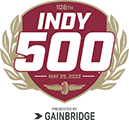
Indianapolis Motor Speedway 200 LAPS | 500 Miles
With four corners banked at 9 degrees, 12 minutes, the Indianapolis Motor Speedway drives more like a road course than an oval. But each of the corners is different, with weather influencing the car's characteristics. The straightaways are 5/8ths of a mile long -- time to catch your breath and dive into the next corner. Infographic: Qualification Format -->
SOCIAL MEDIA
Official hashtag: #indy500.

Weekend Schedule/Results
Latest media.
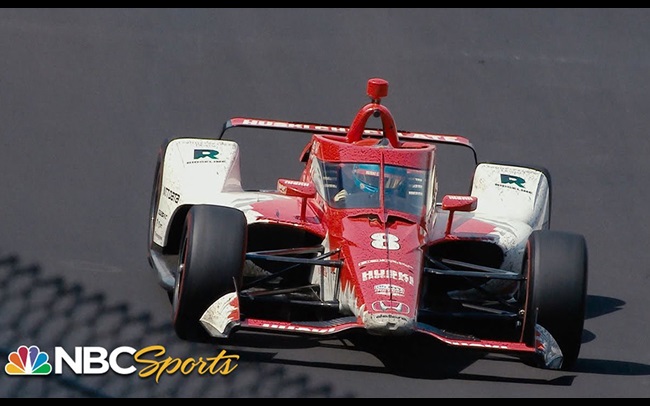
Unleashing the Dragon: Reliving Marcus Ericsson's Incredible Indy 500 Victory
May 16, 2023.

First Look: Marcus Ericsson Unveiling On Borg-Warner Trophy
Oct 26, 2022.
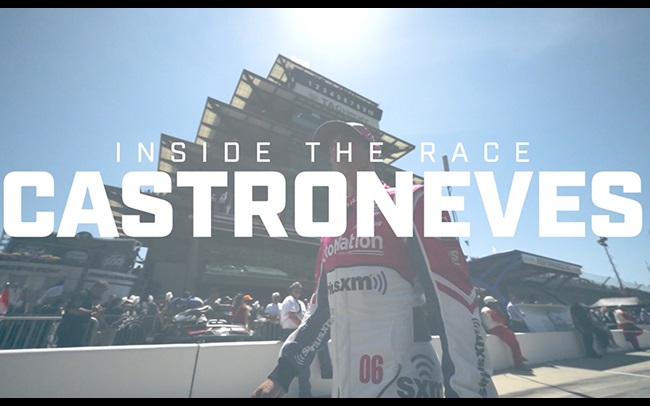
Inside the Race: Helio Castroneves at the Indy 500
Jun 18, 2022.
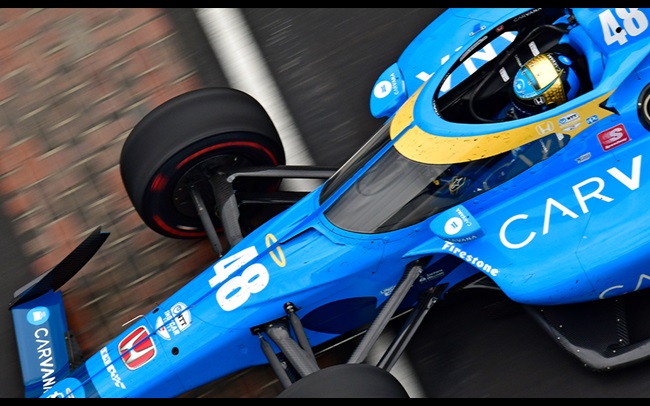
Reinventing The Wheel: Episode 5
Jun 6, 2022.

Race Highlights: Indianapolis 500
May 29, 2022.
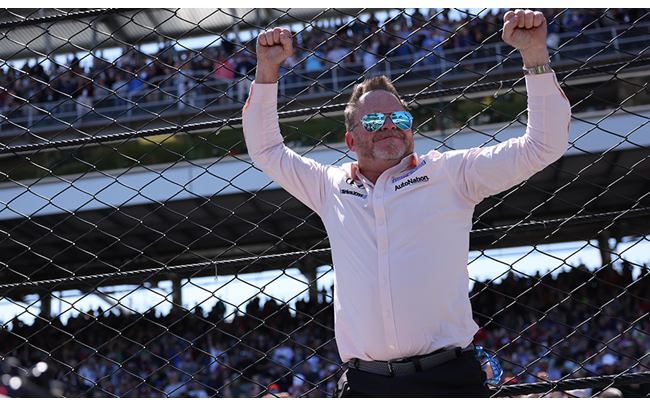
App Exclusive | NTT Meet the Paddock: Mike Shank
May 28, 2022.
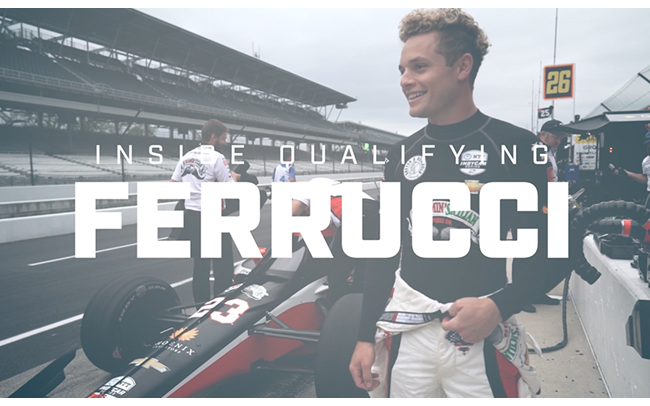
Inside Qualifying: Santino Ferrucci
May 22, 2022.
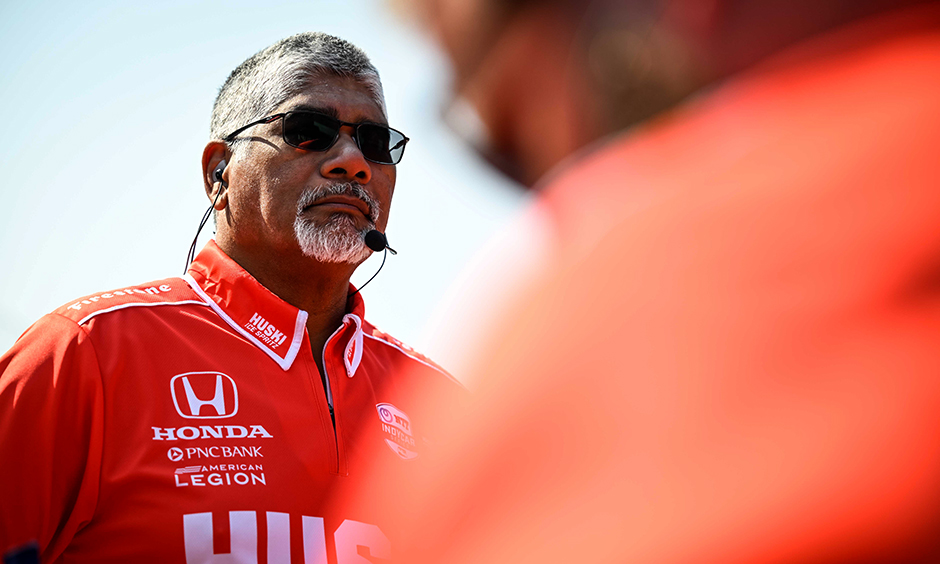
‘Unselfish’ Crew Chief Pena Has Winning Touch for Ganassi
Oct 9, 2023 | curt cavin.
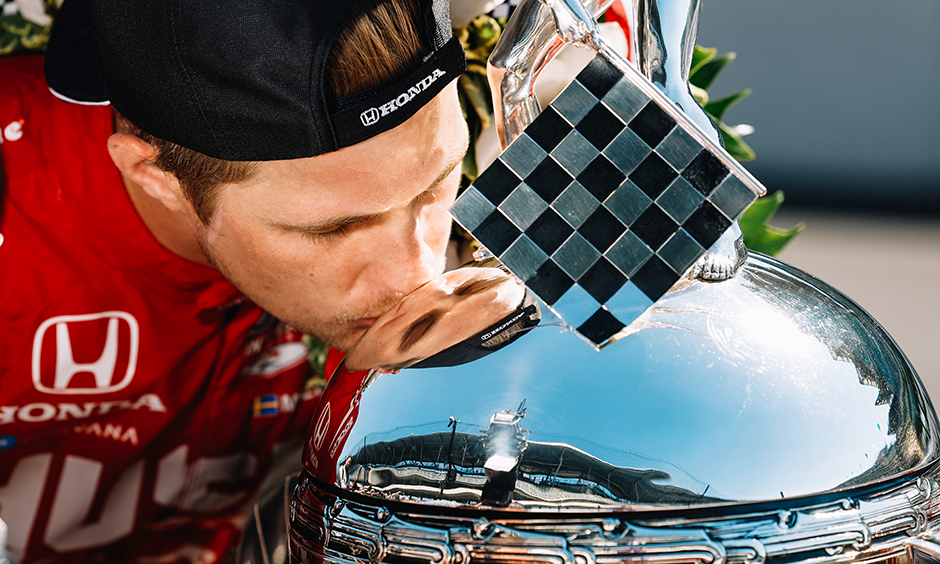
Ericsson Relives 'Dragon' Win at Indy in New YouTube Film
May 17, 2023 | curt cavin.
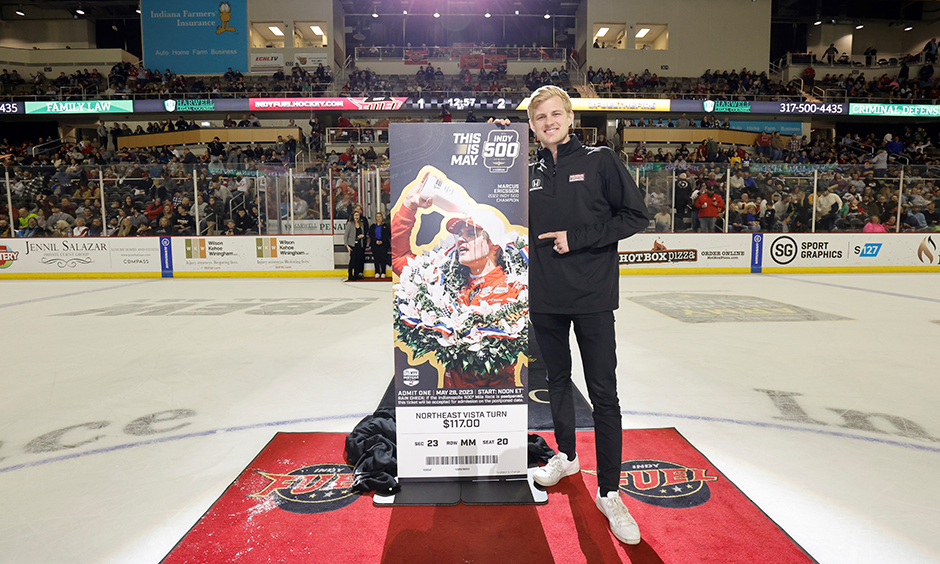
Ericsson Unveils 107th Indianapolis 500 Ticket at Hockey Game
Feb 11, 2023 | indycar.
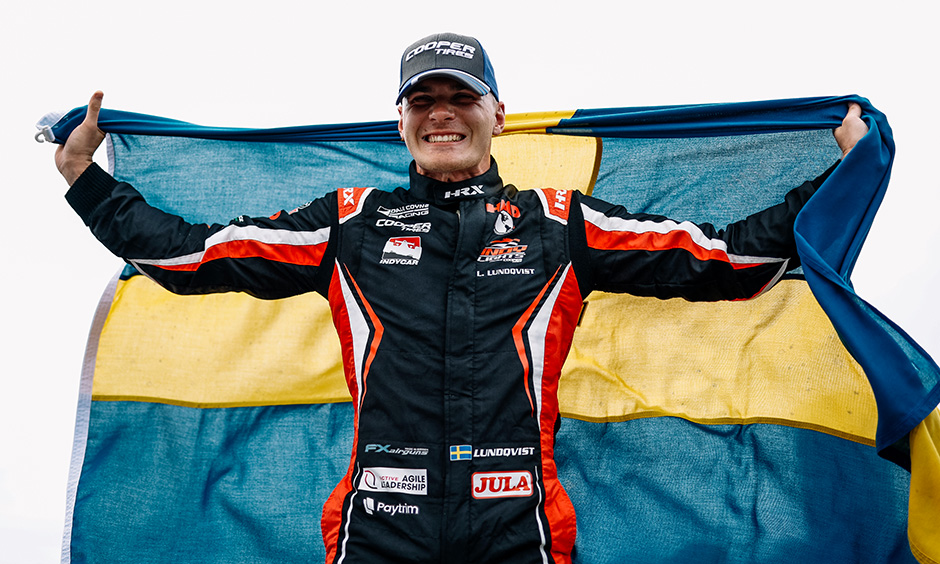
No. 4 of 2022: Super Swedes Take Center Stage in Magical Year
Dec 28, 2022 | curt cavin.
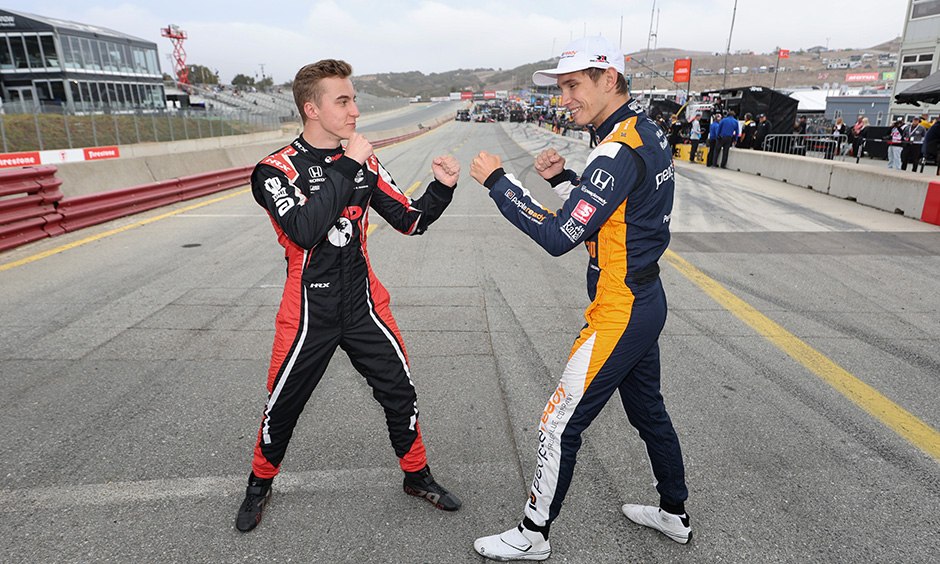
No. 7 of 2022: Lundgaard Tops Malukas in Tight Rookie Fight
Dec 25, 2022 | curt cavin.
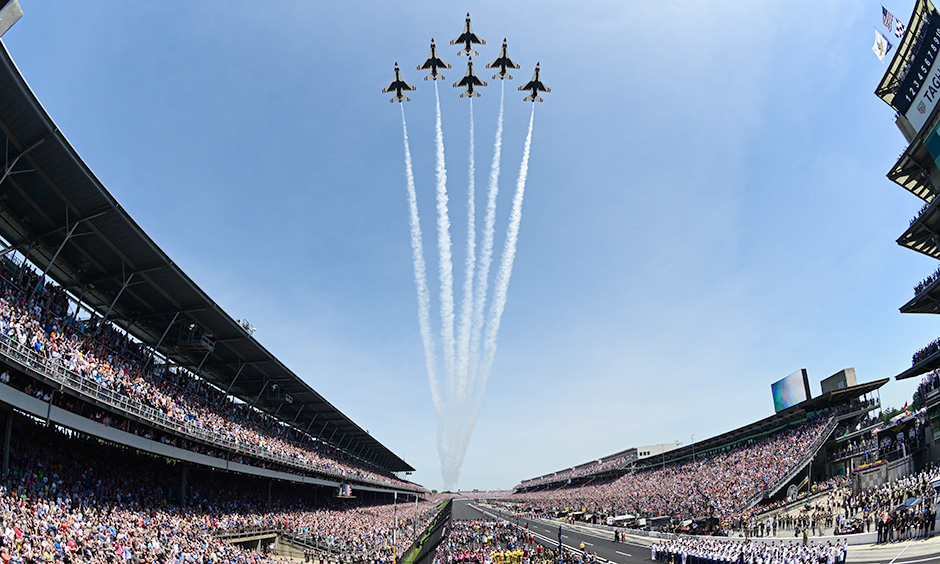
No. 8 of 2022: Upward Trajectory Continues for INDYCAR
Dec 24, 2022 | curt cavin, 2022 indianapolis 500 champion - marcus ericsson - nyc media tour - monday, may 31, 2022, may 31, 2022, 106th indianapolis 500 victory celebration - monday, may 30, 2022, may 30, 2022, indianapolis 500 day after photo shoot - monday, may 30, 2021, 106th running of the indianapolis 500 presented by gainbridge - sunday, may 29, 2022, legends day presented by firestone - saturday, may 28, 2022, miller light carb day - friday, may 27, 2022, may 27, 2022, indianapolis 500 media day - may 26, 2022, may 26, 2022, indianapolis 500 community day - wednesday, may 25, 2022., may 25, 2022, american dairy association rookie luncheon - may 24, 2022, may 24, 2022, indianapolis 500 practice - monday, may 23, 2022, may 23, 2022, indianapolis 500 front row - monday, may 23, 2022, ppg presents armed forces qualifying - sunday, may 22, 2022, 2022 indianapolis 500 qualification photographs - saturday, may 21, 2022, may 21, 2022, ppg presents armed forces qualifying - saturday, may 21, 2022, indianapolis 500 practice - friday, may 20, 2022, may 20, 2022, indianapolis 500 practice - thursday, may 19, 2022, may 19, 2022, a.j. foyt presented "baby borg" trophy - may 18, 2022, may 18, 2022, indianapolis 500 practice - wednesday, may 18, 2022, indianapolis 500 practice - tuesday, may 17, 2022, may 17, 2022, pennzoil presents the club premiere - thursday, may 12, 2022, may 12, 2022, past winners.
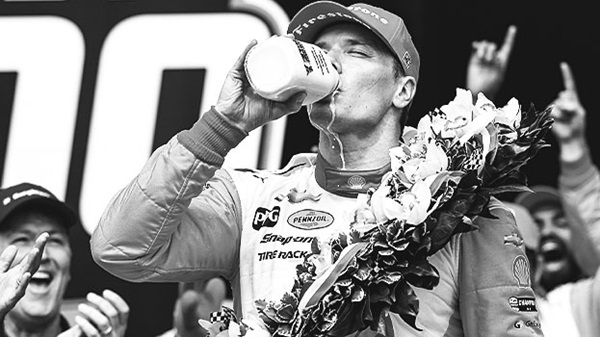
Josef Newgarden
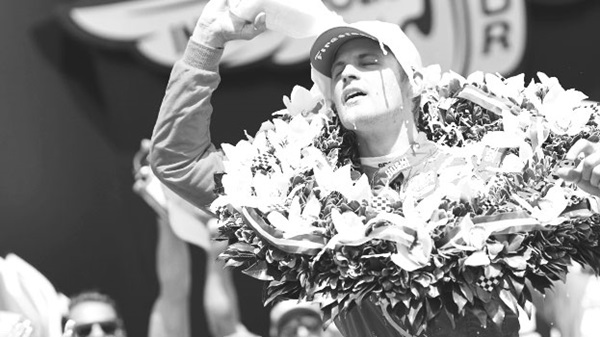
Marcus Ericsson

Helio Castroneves
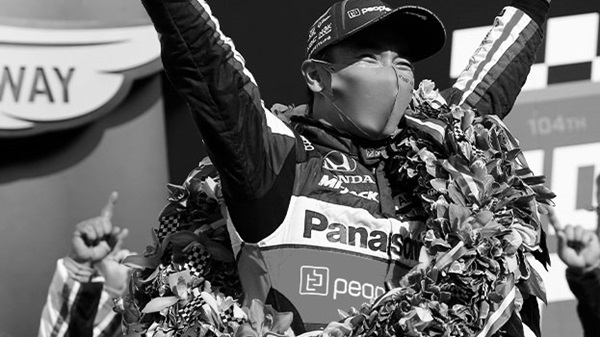
Takuma Sato

Simon Pagenaud
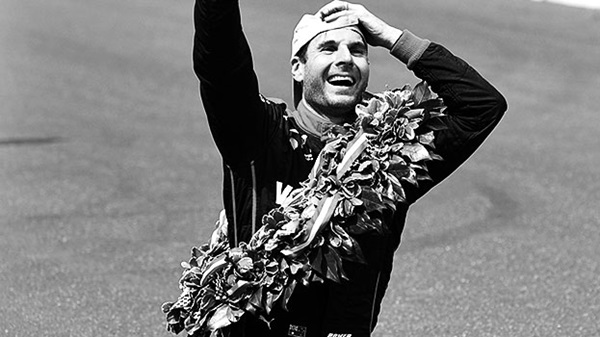
Alexander Rossi
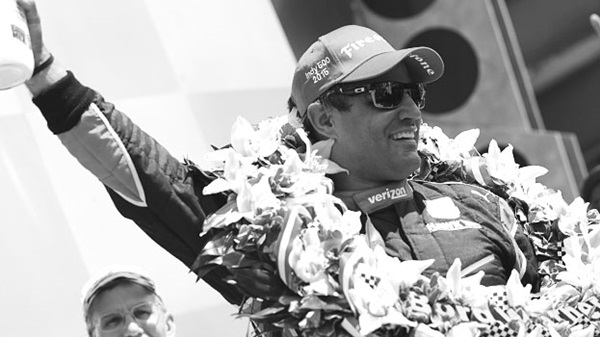
Juan Pablo Montoya
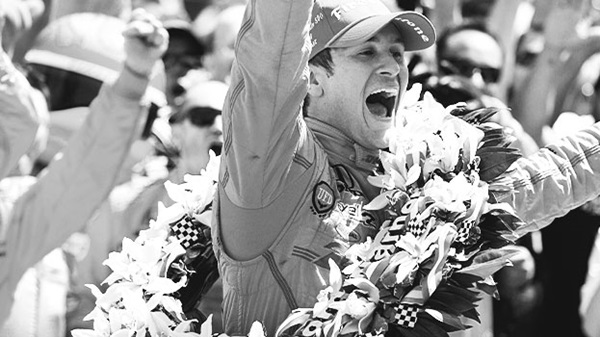
Ryan Hunter-Reay

Tony Kanaan

Dario Franchitti
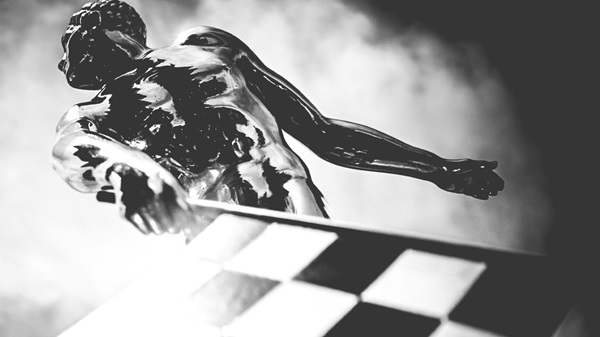
Dan Wheldon

Scott Dixon

Sam Hornish Jr.

Gil de Ferran

Kenny Brack

Eddie Cheever Jr.

Arie Luyendyk

Buddy Lazier

Jacques Villeneuve

Al Unser Jr

Emerson Fittipaldi

Bobby Rahal

Danny Sullivan

Gordon Johncock

Bobby Unser

Johnny Rutherford

Mark Donohue

Mario Andretti

Graham Hill

Parnelli Jones

Rodger Ward

Jim Rathmann

Jimmy Bryan

Pat Flaherty

Bob Sweikert

Bill Vukovich

Troy Ruttman

Lee Wallard

Johnnie Parsons

Bill Holland

George Robson

Floyd Davis

Wilbur Shaw

Floyd Roberts

Louis Meyer

Kelly Petillo

Bill Cummings


Lou Schneider

Billy Arnold

George Souders

Frank Lockhart

Peter DePaolo

Tommy Milton

Jimmy Murphy

Gaston Chevrolet

Howard Wilcox

Dario Resta

John Aitken

Ralph DePalma

Rene Thomas

Ray Harroun
The INDYCAR Experience website requires a modern browser. Please upgrade to one of the following browsers:
The only IndyCar experiences at the world famous Indianapolis Motor Speedway
- Purchase Experiences

Experiences of a Lifetime
The INDYCAR Experience offers Race Fans the exclusive opportunity to Ride in real NTT INDYCAR Series Cars! We are the exclusive Racing Experience at the famed Indianapolis Motor Speedway and offer Racing Experiences at every NTT INDYCAR Series Race Weekend! We invite you to check out our Experiences and to join us trackside for the thrill of a lifetime!
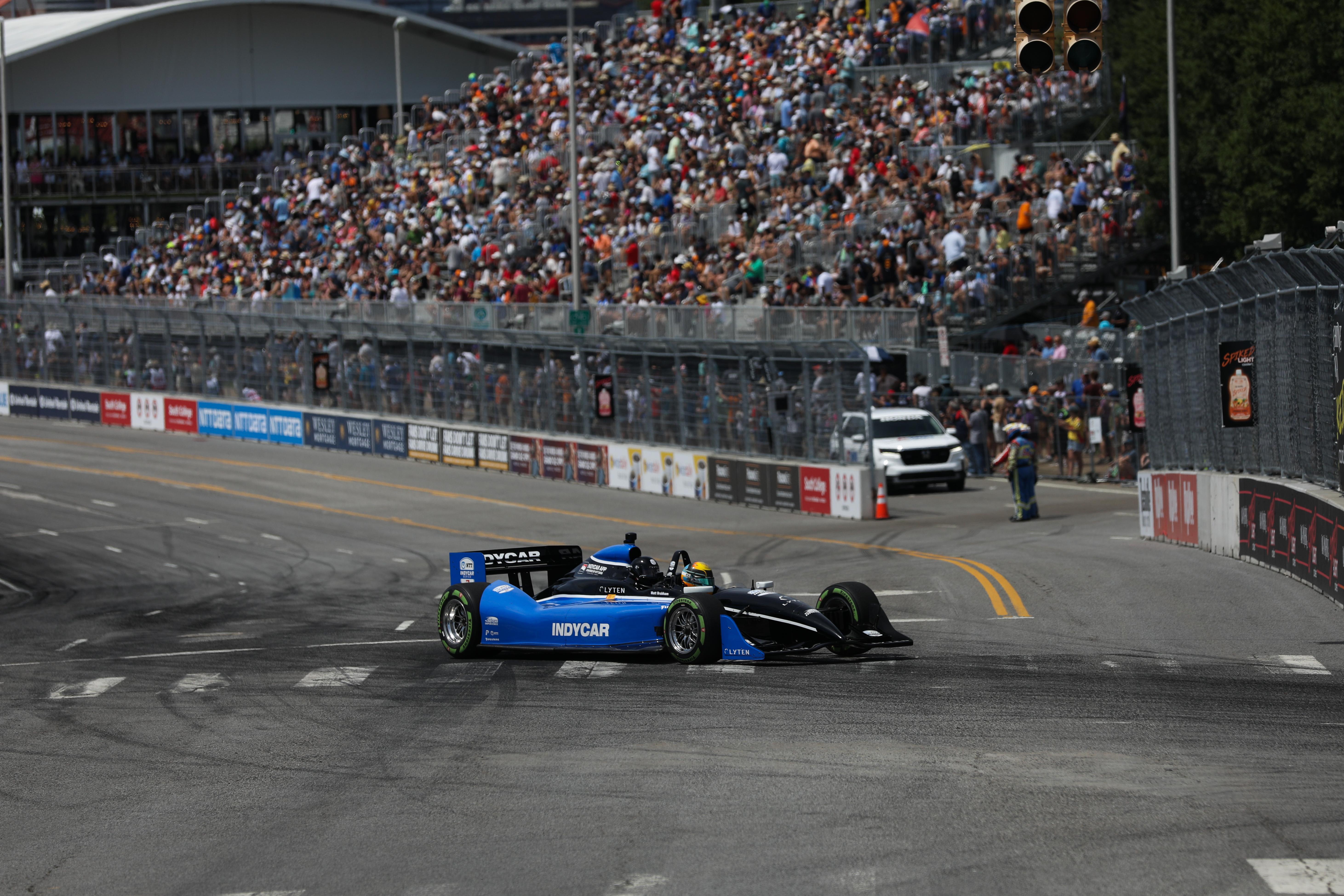
Safety First
Most importantly we make your Ride Experience the safest one possible. We pride ourselves in using the most up to date and top-rated racing industry equipment and safety checks. Our relationships with the best of racing manufacturers means there is no worry, just fun!
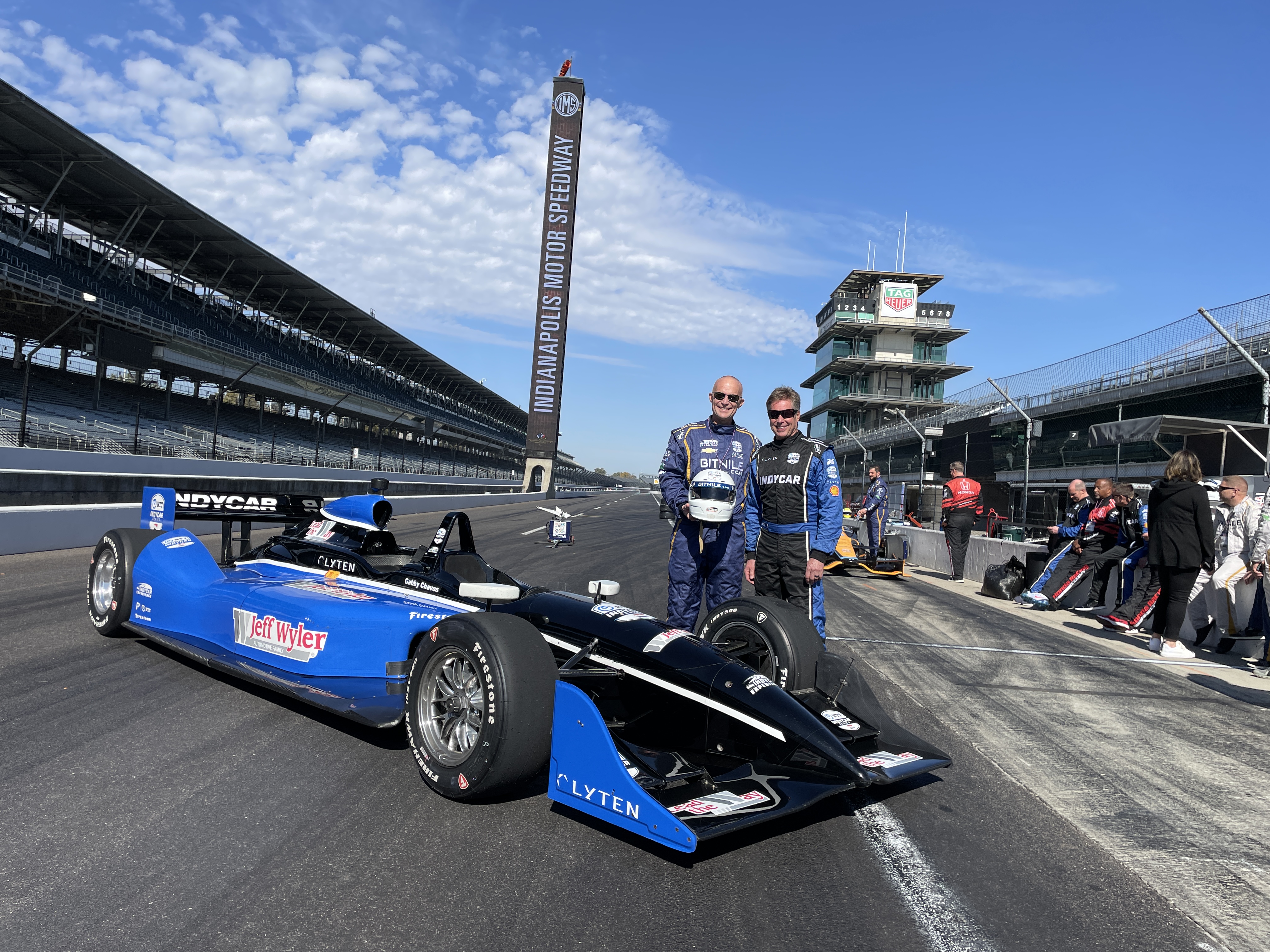
Top of the Line
In direct partnership with Dallara, Firestone, and the NTT INDYCAR Series, We utilize only certified INDYCAR Drivers to operate our Two-Seater INDYCARS. Offering this unique experience to feel the speeds and g-forces that in the past only INDYCAR drivers could experience while racing. We invite you now to come join us trackside while You sit back, relax, and enjoy this Ride of a Lifetime!
This is a test.
Museum Closed for Renovations – Track Tours Still Available | LEARN MORE
School Visits
Bring your classroom to the indianapolis motor speedway museum.
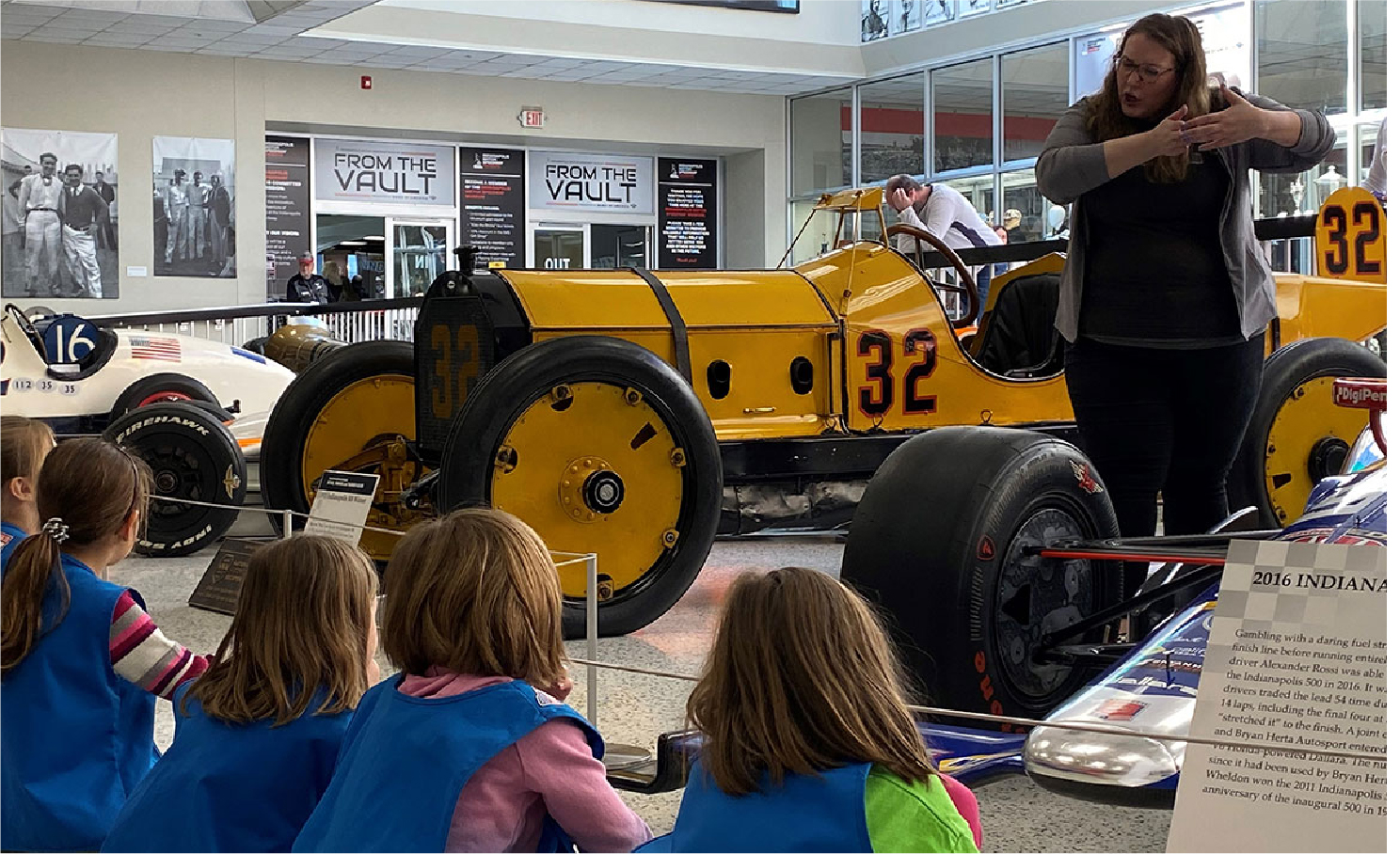
TEACH YOUR STUDENTS ABOUT RACING HISTORY
At the Indianapolis Motor Speedway Museum, your students can learn from the experts! We welcome visits from schools interested in teaching their students about the history of motorsports, the Indianapolis Motor Speedway, and the Indianapolis 500. Education is an essential part of our mission, and we strive to share the stories behind the Speedway and the incredible lessons learned both on and off the track.
During school visits, your class is free to explore the Museum independently, or you can request a guided tour with one of our expert hosts. Students can also sign up for a tour of the Indianapolis Motor Speedway, where they can take a lap around the oval and even kiss the bricks. So, get ready for an unforgettable field trip to the Racing Capital of the World!
Teachers and educators are welcome to contact [email protected] or call 317-492-6747 for help scheduling a visit.
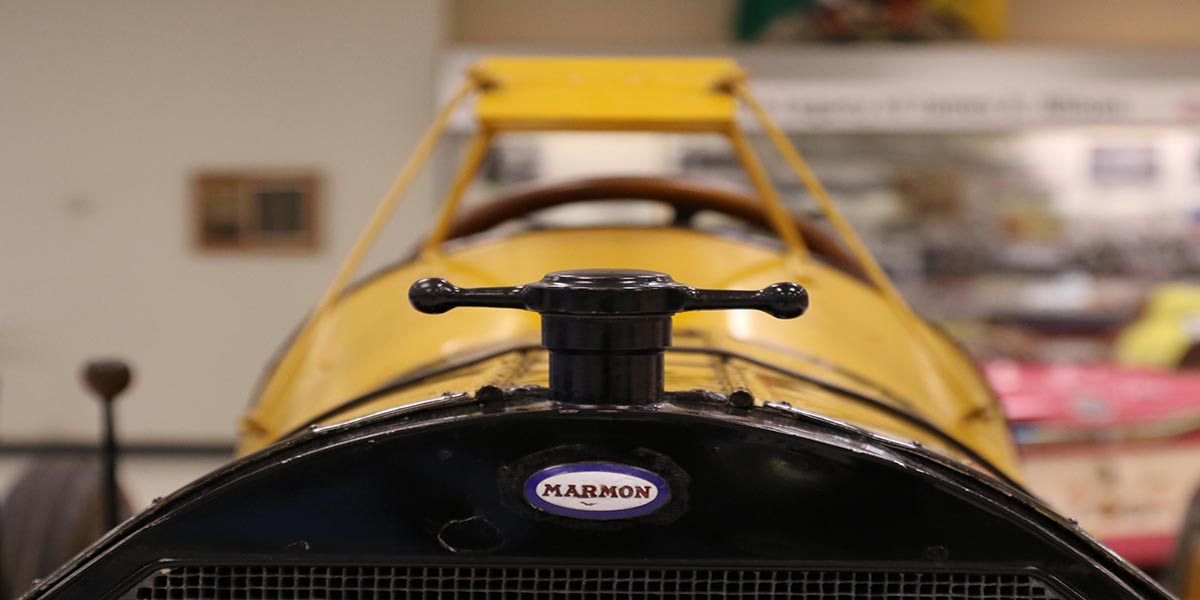
TEACHER RESOURCES
The Indianapolis 500 is the Greatest Spectacle in Racing—and a perfect learning opportunity! We encourage educators across the country to use the Indianapolis Motor Speedway Museum and the Month of May as a teaching tool, demonstrating the power of innovation, ambition, and determination.
The lesson plans and resources below are designed to get your students excited about their visit to the Museum and enhance their experience here. These resources can also be used as supplemental materials for Indiana history lessons, science and engineering classes, and teaching new race fans about the Indianapolis Motor Speedway!
All materials are owned by the Indianapolis Motor Speedway Museum. They may be used by individuals, schools, and libraries for study, research, or classroom teaching without permission.
School Visits FAQ
When can my class visit the museum.
The Museum is open for school tours on Tuesdays, Wednesdays, and Thursdays from 10 AM – 3 PM. Three weeks notice is required, and a maximum of 150 students are allowed per day. Please contact [email protected] or call 317-492-6747 for help scheduling your visit.
How much does admission cost?
Museum admission costs $8 per student. Teachers and drivers receive complimentary admission, while adult chaperones qualify for discounted $8 admission.
What are the chaperone requirements?
One adult is required for every 10 students in attendance. Chaperones must accompany all student groups at all times to ensure that students follow our behavior guidelines.
We ask that students be considerate of other visitors by using their inside voice at all times. Students are not permitted to run in the Museum or touch any of the cars or displays. Please note that inappropriate behavior may result in a shortened visit.
What lunch areas are available?
The Museum has no indoor areas available for lunches. Some outdoor areas are available depending on weather and track activity.
Can my class tour the Indianapolis Motor Speedway?
Both our Museum and Track Tours are available for groups as an additional purchase. Capacity restrictions may apply. During the month of May, our Kiss the Bricks Tours are limited to a maximum of 50 students and chaperones.
You can view our current tour schedule here . However, tour schedules are subject to change without notice due to weather or track activity. Please contact [email protected] or call 317-492-6747 for more information.
EXPERIENCE THE HISTORY BEHIND THE GREATEST SPECTACLE IN RACING!
One Hundred Years of the Indy 500
A century ago, the first Indianapolis 500 race started in high excitement and ended in a muddle
Charles Leerhsen
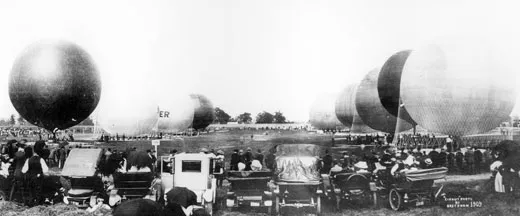
The men of the early 20th-century motor press sometimes referred to the 13th circuit of an automobile racecourse as “the hoodoo lap,” not because more bad stuff happened then, but because they fervently wished it would. Coming at that point, a wreck would play nicely into the tabloid trope that superstitions are not to be flouted, and it would give a long car race some much-needed narrative cord. And so it was on May 30, 1911, as several dozen reporters leaned forward anxiously to watch the 40-car field for the first-ever Indianapolis 500-mile race power past the starting line for the 12th time and roar yet again into turn one.
They weren’t a bad lot, the newspapermen who had come to the two-year-old Indianapolis Motor Speedway to cover the event, but they required—and by some standards of judgment deserved—all the help they could get. Many by then had been in Indianapolis for a month or more, pumping up the importance of the Speedway and the coming sweepstakes—the longest race ever contested on the track—via the dispatches they filed for their far-flung dailies. They had recorded the arrival of virtually every “sweepstakes pilot” in the race, especially Ray Harroun, driver of the No. 32 Marmon “Wasp,” an Indianapolis-built car and the only single-seater in the race. (All the other drivers traveled with “riding mechanics,” who manually pumped oil and swiveled their heads constantly to check for oncoming traffic.) They interviewed drop-by celebrities like Detroit Tigers outfielder Ty Cobb and “noted songstress” Alice Lynn, investigated the burgeoning supply of counterfeit $1 general admission tickets, and scrambled for stories about the Indianapolis house cat that “deliberately committed suicide” by jumping from a sixth-story window, the downstate chicken with 14 toes on its left foot and the rumored sightings of a PG-rated pervert known as Jack the Hugger. For men accustomed to doing little more on a workday than walking the length of a boxing ring to ask one toothless man his opinion of another, this was arduous labor.
But the 500-mile sweepstakes, when it finally transpired on that surprisingly cool Tuesday morning, wasn’t paying the pressmen back in kind. The race had gotten off to a thrillingly raucous start replete with aerial bombs and a grandstand packed with an estimated 90,000 enthusiasts. People were excited by the amount of money at stake (the winner’s share would be $10,000, an impressive sum in an era when Cobb, baseball’s highest-paid player, made $10,000 a season) and the danger. (In the downtown saloons you could bet on how many drivers, who wore cloth or leather helmets and had no seat belts or roll bars, might be killed.) But with every mile the story line had become more and more scrambled and the spectators more and more subdued. Those charged with describing the “excitement” to an eager audience of millions were feeling the first damp signs of panic. Like every other lengthy automobile contest these experts on baseball and boxing had ever witnessed, this one was damnably confusing . The auto racing tracks of the day simply did not have the technology to keep track of split times and running order once cars began passing one another and going into and out of the pits.
On certain early developments almost everyone could agree. “Happy” Johnny Aitken, in the dark-blue No. 4 National car, had grabbed the early lead, only to be passed, after about seven miles, by Spencer Wishart, a mining magnate’s son driving a squat, gray customized Mercedes said to have cost his daddy $62,000. Eight laps later Wishart (who wore a custom-made shirt and silk tie beneath his overalls) suddenly pitted with a bad tire, leaving the lead to a big brown Knox driven by an unheralded public-school kid from Springfield, Massachusetts, named Fred Belcher. Soon Wishart stormed back onto the course, but into what lap exactly no one, including the judges, could say for certain. The leaders, as mile 30 approached, were starting to lap the stragglers, so the field was a snake eating its own tail. Belcher now found himself running second to a ball of smoke concealing, it was generally believed, the dark red Fiat of 23-year-old David Bruce-Brown, a square-jawed, fair-haired New Yorker from a wealthy merchant family. A class-war theme might be emerging—trust-fund kids versus their working-class counterparts—but then again, perhaps not.
The crowd regained its focus and oohed each time a scoreboard worker indicated a change in running order by manually removing and rehanging the car numbers on their pegs. Still, the denizens of the infield press box—more skeptical than the average fan, and with a better perch—couldn’t help noticing that the Speedway’s four scoreboards were usually not in agreement, and that a crew from the timing department was frantically trying to repair a tripwire that had been snapped by who knows which automobile a lap or two back. (The crew succeeded, but the wire was immediately rebroken.) The Warner Horograph, as the Speedway’s timing system was known, was a ridiculously Rube Goldbergesque device involving miles of wire as well as rolls of paper, typewriter ribbon, springs, hammers, telephones, Dictaphones, marbles and hundreds of human beings. Its sheer complexity was impressive, but the Horograph was utterly useless when it came to recording time and keeping track of races. Given such chaos, was it really so wrong to wish for a spectacular accident that would wipe away the early muddle and allow the beleaguered scribes a second chance at getting a grip on the action?
Of course it was wrong, but moral questions wither in the face of a hoodoo, even one conjured by a coven of pasty-faced, ink-stained hacks. Right on cue, the No. 44 Amplex, a bright red car driven by Arthur Greiner and traveling in mid-pack, lost a tire, though accounts vary as to which. The bare wooden wheel hit the bricks hard, causing Greiner’s auto to swerve crazily and veer into the infield, where it plowed through tall meadow grass and began a somersault, only to stop in mid-maneuver, so that it stood straight up, balancing on its steaming grill. The 27-year-old Greiner was flipped from the cockpit like a shucked oyster, with the steering wheel somehow still in his mitts. Riding mechanic Sam Dickson, meanwhile, remained more or less in his bucket seat, one hand planted on the dashboard, the other clutching a leather side-handle, his only restraining device. This was the sort of heart-stopping moment that only auto racing could provide. If the car fell backward, returning to its three remaining tires, he might get nothing worse than a jolt. But if it fell forward, it would drive Dickson’s head into the ground like a tent spike. The crowd fell silent. Dickson tensed. The Amplex rocked on its radiator.
Sensing disaster, scores of spectators began surging over the fence that separated the track apron from the homestretch. This was a common occurrence in the wake of a potentially fatal accident. So eager were some men, women and children to get a closer look that they would risk their own lives by running across a track teeming with racing machines.
In real time, the upended Amplex couldn’t have taken more than a few seconds to fall. And when it did, it fell forward, killing Dickson. As Robert Louis Stevenson once wrote: “There is indeed one element in human destiny that not blindness itself can controvert: whatever else we are intended to do, we are not intended to succeed; failure is the fate allotted.” Dickson’s body was taken with dispatch to the Speedway hospital tent and the race continued without interruption, with the drivers swerving around spectators unable to control their morbid curiosity.
Twenty-five minutes later, the invading spectators had been dispersed by Speedway security guards, and the grandstand resumed its distracted rumble. Standing alone over the wreck of Dickson and Greiner’s race car was a 14- year-old Hoosier named Waldo Wadsworth Gower, who had sneaked into the Speedway the day before and spent the night in the pits. In a letter he wrote in 1959, Gower recalled the piercing sadness brought on by the sight of the mangled auto, reminding him of a similar Amplex he had seen being polished to a high gleam two months before at the American Simplex factory in Mishawaka, Indiana. With “a nice shiny coal oil lantern hung on the radiator cap” and the light “of a bright moon,” he wrote, it had found its way to the city of big dreams.
This is all very touching, I thought, while reading the letter, which had been passed along to me by Sam Dickson’s nephew Scott—but I also couldn’t help wonder why this kid was standing in the middle of the infield getting all Proustian instead of watching the race. Gradually, though, as my research deepened, I came to realize that except in moments of crisis very few spectators were following the action. Newspapers and auto-industry magazines noted that for most of the day many seats in the grandstand, though paid for, went unoccupied, and lines at lavatories and concession stands remained serpentine.
Few watched for the simple reason that no one could tell what he was seeing. The opening half-hour had been bewildering enough, but at least it was fairly apparent in those first 30 miles who held the lead. As the field approached 40 miles, tires started to blow. Belcher’s Knox, Wishart’s Mercedes and several other cars were among the first to hobble into the pits. It took some crews only two minutes to change a tire, others eight or 10 or 15, and no one was timing these stops officially, so the already debatable running order became inscrutable. To compound the chaos, some cars were crossing the finish line and then backing up to their pit, so they (perhaps inadvertently) got credit for a whole additional lap when they emerged and traveled a few feet back across the line. And the worst breaches of order and continuity were yet to come.
What made all this especially maddening was that the race was proceeding exactly as everyone had expected it would, given the natural antagonism between bricks and tires: the smarter drivers, like Harroun, were going at the relatively easy pace of 75 miles an hour or so in an attempt to keep pit stops to a minimum, just as they had said they would in pre-race interviews. You might think that such a conservative and formful contest would help the clocking and scoring officials in their labors. But no. As the trade publication Horseless Age put it, “The system...did not work as expected, merely because the cars were so numerous and tore around so fast.” In other words, if only there hadn’t been a car race at the Speedway that day, the Warner Horograph would have functioned just fine.
A few writers—a largely ignored minority, to be sure—were frank about the problems. “The workers at the great score boards...keep very bad tally on the laps that each car makes,” wrote newspaperman Crittenden Marriott, whose on-deadline dispatch has held up well. “Hundreds of amateur mathematicians do sums upon their cuffs and find that the pace is 70 to 75 miles an hour, a speed that the survivors maintain till the end.” The New York Times : “It was acknowledged that the timing device was out of repair...for an hour during the race.” (Some sources had the downtime as considerably longer.) No one sounded more exasperated than the influential weekly Motor Age , which dismissed the race as “a spectacle rather than a struggle for supremacy between great motor cars.” There were “too many cars on the track. The spectator could not follow the race.”
Most reporters, realizing that a conventional story was easier to compose on deadline than an exposé (and, no doubt, that Speedway publicist C. E. Shuart had been covering their drink tabs), acted as if the race had a coherent storyline. The writers did this partly by guessing at what they were seeing and by agreeing to agree on certain premises. But mostly they accepted the Speedway’s official version of events as disseminated by Shuart—even though it did not always jibe with the venue’s scoreboards, and would change substantially when the judges issued their Revised Results the next day. What any one of these spoon-fed reporters had to say about the running order is mostly worthless. But by braiding their accounts, and occasionally referencing the Revised Results, we can begin to recreate a very rough version of the race.
The dashing David Bruce-Brown, we can say with a fair amount of certainty, played an important role. Virtually all the writers agreed that his Fiat, leading when the Amplex plunged into the infield on lap 13, was still ahead when the field began to stream past the 40-mile mark. At 50 miles, though, accounts diverge. Most dailies said “the millionaire speed maniac” remained on top, but the Horseless Age , in an issue that appeared the day after the race, had Johnny Aitken and his No. 4 National back in front at this point, with Bruce-Brown second and Ralph DePalma third. The Speedway’s Revised Results, meanwhile, put DePalma in the lead at mile 50, followed by Bruce-Brown, then Aitken.
Virtually all sources converge again at mile 60, where they have DePalma ahead, and most also say Bruce-Brown reclaimed the lead soon after and held it for a good long while. At mile 140, some sources place Bruce-Brown a full three laps, or seven and a half miles, ahead of DePalma, with Ralph Mulford and his No. 33 Lozier third. As for Harroun, he had been riding as far back as tenth place for most of the race by some estimates, but he moved into second place at mile 150. Or so said some sources.
The second significant accident of the day occurred at mile...well, here we go again. The Star said it was the 125th mile, the Horseless Age between the 150th and 160th miles when Teddy Tetzlaff, a California driver on Mulford’s Lozier team, blew a tire and crashed into Louis Disbrow’s No. 5 Pope-Hartford, seriously injuring the Lozier riding mechanic, Dave Lewis, and taking both cars out of the competition. The Revised Results have Disbrow dropping out of the race after about 115 miles and Tetzlaff leaving with mechanical problems after a mere 50. So by the Speedway’s lights the participants weren’t racing when their accident occurred and Lewis did not officially fracture his pelvis.
At mile 158, Harroun pitted and turned his car over to a fellow Pennsylvanian named Cyrus Patschke. At about mile 185, Bruce-Brown blew a tire and made his first pit stop of the day, and Patschke took the lead. In the opinion of every reporter at the Speedway, and according to the initial data provided by the Horograph, Patschke reached the 200-mile mark first. The Revised Results, however, have it Bruce-Brown, DePalma, Patschke.
The buffs who still chat about such matters know that May 30, 1911, was not the finest hour for the steering knuckle (the automobile part that allows the front wheels to pivot). Several knuckles had given way early in the day, and at about 205 miles, relief driver Eddie Parker broke the one on the No. 18 Fiat and spun out at the top of the homestretch. Though not a serious mishap—no one was hurt and Parker got out and with a few others pushed his car a few hundred yards into the pits—it set the stage for what steering knuckle historians know as the Big One.
As the leaders, whoever they were, came down the homestretch on what is officially said to be mile 240, Joe Jagersberger’s red and gray No. 8 Case bounced off the concrete retaining wall on the outer part of the track and skidded diagonally toward the infield, traveling perhaps 100 feet. Jagersberger’s riding mechanic, Charles Anderson, fell or perhaps jumped in panic out of the vehicle and wound up underneath it, lying on his back; one of the Case’s rear wheels passed directly over his chest. He was able to get up, however, or at least begin to—when he saw Harry Knight bearing down on him in the battleship gray No. 7 Westcott.
Knight was a rapidly rising young pilot trying to win enough money to marry Jennie Dollie, the so-called Austro-Hungarian dancing sensation. She had at first balked at his pre-race proposals, saying, “No haphazard racer for my life’s companion!” via her hopefully not very expensive interpreter. But she had proffered a tentative yes, the Star reported, after “she found out Knight was a man of good habits and devoted to his mother” and he presented her with a diamond solitaire. All Knight had to do was to pay for the ring, but here now was Anderson literally standing between him and a possible share of the purse. Should he mow down the hapless riding mechanic and perhaps improve his position in the running order—or swerve and quite likely wreck?
His love for Miss Dollie notwithstanding, he crushed the brakes and veered toward pit row—where he crashed into the vermilion and white No. 35 Apperson, taking his own and Herb Lytle’s car out of the race. (Anderson was hospitalized briefly, but survived.) In an article headlined “Who Really Won the First Indy 500?” by Russ Catlin in the Spring 1969 issue of Automobile Quarterly and in a very similar and identically headlined piece by Russell Jaslow in the February 1997 North American Motorsports Journal , the authors state that Jagersberger’s Case hit the judges’ stand, leading the timing officials to scramble for their lives and abandon their duties.
The incident those authors describe is consistent with the sometimes slapsticky nature of the day, yet there is no evidence of a crash into the judges’ area. The official historian of the Indianapolis Motor Speedway, Donald Davidson, a revered figure in motor sports and staunch defender of the official results of the race, maintains that Catlin got this wrong, and that Jaslow merely repeated the untruth. Davidson notes that the smashing of the judges’ stand would surely have been mentioned in the newspaper accounts of the race (especially since the structure was just a few yards from the main press box), but that absolutely no reference to a smashup appears in any daily or weekly journal. He is right about that, and what’s more, a brief film clip of this portion of the race, available on YouTube ( www.youtube.com/watch?v=DObRkFU6-Rw ), appears to bear out Davidson’s contention that there was no contact between the Case and the judges’ structure. Ultimately, though, the question is moot because Jagersberger’s car came close enough to the stand to send timing officials running, and there are contemporary reports stating that after the accidents at mile 240, no one was keeping track of the timing and running order for at least ten minutes. If the operators of the Warner Horograph hadn’t lost the thread of the race narrative before that moment, they would have done so then. In any case, with the halfway point approaching, the Indianapolis News reported, “so much excitement was caused in the judges’ and timers’ stands that the time for the 250 miles was overlooked.” Horseless Age said Harroun’s reliever, Patschke, had the Wasp ahead at the halfway point; the Star said Harroun himself had the car in the lead, and the Revised Results said it was Bruce-Brown, followed by the Wasp, then Mulford’s Lozier.
Taken to a local hospital, the men involved in the incident at mile 240 were found to have serious but not life-threatening injuries. Meanwhile at the Speedway medical tent, one reporter noticed a curious sight: Art Greiner reading an extra edition of the Star that had been dropped off at the Speedway just minutes before. “Bruce-Brown in Lead,” read the main headline on a page-one story that included a report that he had been fatally injured in the accident on lap 13. After being carried to the enclosure, Greiner had likely received the standard Speedway hospital treatment: his wounds packed with black peppercorns to deter infection and bandaged with bed linen donated by local citizens. He had probably been given a few stiff belts of rye whiskey as well; he seemed serene and reflective when the reporter approached.
“I was perfectly conscious when we whirled through the air,” Greiner said. “Dick[son]—poor boy—I guess he never realized what happened.” Then alluding to pre-race complications with the 44, he said, “I’m convinced now that it really does have a hoodoo.”
Around the 250-mile mark, Patschke pulled into the pits and hopped out of the Wasp, and Harroun grabbed a hot-water bottle and hopped back in. If the Wasp truly had the lead, then it was Patschke who had put it there.
All sources had Harroun ahead at 300 miles, but now Mulford was making his move. The Lozier hovered 35 seconds behind the Wasp from mile 300 to 350 and onward, according to Horseless Age . For what it’s worth, the Revised Results have Mulford in front at 350 miles—though the Star spoke for most journalists when it said “Harroun was never headed from the 250th mile to the finish of the race.”
At about 400 miles, the drivers positioned themselves for the final push. DePalma bore down so furiously that he was forced to come in for tires three times over a mere 18 laps. Mulford’s Lozier also had tire trouble: late in the race, he pitted for a replacement that took less than a minute, then came in again a few laps later for several minutes. The crowd, said Motor Age , “realized that it really was a race. They forgot their morbid curiosity in accidents and studied the scoreboards.”
But what exactly did they see there? After 450 miles, the Lozier team would insist that its car was listed first on at least one of the scoreboards and that officials had assured team manager Charles Emise that was one of the rare scoreboard postings people could trust. As a result, Emise would say, he signaled Mulford to ease off in the last 10 or 20 miles so he wouldn’t have to pit and jeopardize his lead. Several members of the Lozier camp would later swear that Mulford saw the green, one-lap-to-go flag first, at which point he was running comfortably ahead of Bruce-Brown, with Harroun third. A mile or so later, Bruce-Brown’s Fiat dropped back behind Harroun.
Mulford, in this version of events, crossed the wire first, and, as was the custom among drivers of that day, ran an “insurance lap” after getting the checkered flag, to be sure that he had covered the required distance. When Mulford went to the winner’s circle to claim his trophy, he found Harroun already there, surrounded by cheering multitudes. Harroun, the official winner, didn’t have much to say beyond, “I’m tired—may I have some water, and perhaps a sandwich, please?” Or something to that effect. Whether he ever wondered if he really crossed the wire first, we will never know. As a driver who came up in the era before windshields were invented, he had learned to keep his mouth shut.
Adapted from Blood and Smoke: A True Tale of Mystery, Mayhem and the Birth of the Indy 500 , by Charles Leerhsen. Copyright © 2011 by Charles Leerhsen. Reprinted by permission from Simon & Schuster. All rights reserved.
Charles Leerhsen ’s previous book was Crazy Good , a portrait of the harness-racing champion horse Dan Patch.
Get the latest History stories in your inbox?
Click to visit our Privacy Statement .
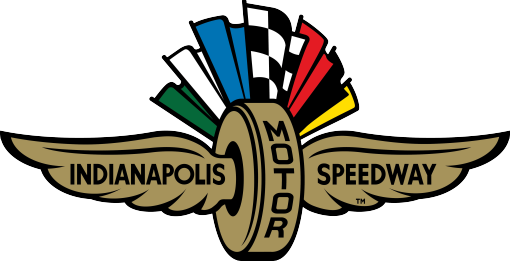
Indianapolis Motor Speedway Museum
The museum is closed for renovations, but you can still take a tour of the track.
The Indianapolis Motor Speedway Museum is undergoing a major renovation and will be closed until April 2025. For the latest information on the renovation plans, please visit the Museum's official website.
Tours are available every day of the year except Thanksgiving and Christmas, offering a variety of track and “behind the scenes” tours, depending on weather and track availability.
Guests can check in for tours at the Pepsi building to the west of the Museum. The building also houses the Indianapolis Motor Speedway gift shop, which is open 9 a.m. - 5 p.m. seven days a week except for Thanksgiving and Christmas Day.
In addition to the Museum’s website, news and information is available at (317) 492-6784, or on the Museum’s Twitter , Facebook and Instagram pages.
The IMS Museum is operated by the Indianapolis Motor Speedway Foundation, a not-for-profit, 501(c)(3) entity, which relies on individual memberships, sponsor partners and philanthropic donations for much of its operating budget.
TRACK TOURS
- Adults (age 16 and up) $15
- Seniors (age 62+) $14
- Veterans and Active Duty Military (with proof of service) $8
- Youth (6-15) $8
- Children (up to age 5) FREE
Entrance into the grounds is free of charge on non-event days. However, during events the Indianapolis Motor Speedway charges an admission fee or requires a ticket to get onto the grounds. This general admission fee or ticket price does not include tour admission.
HOURS & CONTACT INFO
The Indianapolis Motor Speedway Museum is currently closed for renovations, but track tours are offered every day of the year except for Thanksgiving Day and Christmas Day.
Track Tour Hours
- 9 a.m. - 5 p.m. (ET) March - October
- 10 a.m. - 4 p.m. (ET) November - February (Closed Thanksgiving Day, Christmas Day) - the last track tour begins at 3:15 p.m.
- Current Hours: 10 a.m. - 4 p.m. (ET) - the last track tour begins at 3:15 p.m.
General Information (during open hours): (317) 492-6784
Tour Information: [email protected]
Online: www.imsmuseum.org
Photo Shop Hours:
Thursday and Friday - 9 a.m. - 5 p.m. (ET) Saturday 12 p.m. - 5 p.m. (ET)
Kiss the Bricks Tour & View From the Top Tour
Take a lap around the famed 2.5-mile oval with our “Kiss the Bricks” tour, a 30-minute narrated tour with a stop at the start/finish line so you have an opportunity to do what race winners have done since 1996: kiss the 1909-vintage paving bricks that once comprised the entire racing surface.
The “View From the Top” tour includes a 30-minute guided tour of the Indianapolis Motor Speedway with stops at Victory Podium and the iconic Pagoda. After visiting Victory Lane, you’ll travel to the top of the 153-foot-tall Pagoda for a breathtaking view of the Speedway and the surrounding downtown skyline.
- Youth (age 6-15) $8
Golf Cart Tours
Reserve our two-hour Golf Cart Tour, which includes a detailed view of all IMS landmarks, the track and “Yard of Bricks,” plus refreshments a ticket lanyard and one-on-one conversation with a Museum tour guide. Guests must be age 12 or older and accompanied by an adult. Golf Cart Tours are available March 1-October 31. For tour pricing and schedules, call the IMS Museum Tour Desk at (317) 492-6747, or visit www.imsmuseum.org .
Location & Directions
The Museum is located at 4750 W. 16th Street, Speedway, IN, 46224, inside the track between turns 1 and 2. The entrance to the Museum is located at Gate 2 on the north side of 16th Street. This is marked by a black banner on the west side of the entrance.
During the renovation, track tours and the IMS Retail Shop are housed in the building to the west of the Museum. Look for the signs to direct you to their location.
View directions to the Indianapolis Motor Speedway.
Parking is available at the Museum and is free of charge during days that the track is not in use for a race or other public event. During races and certain other events, Museum guests may need to park outside of the track and walk in.
During on-track days this May, visitors should park in open IMS parking lots and use the Pagoda Plaza shuttles to access the Museum.
Accessibility
The Museum strives to make its buildings, collections, programs and services accessible to all visitors. Companions or aides of persons with disabilities are admitted free of charge. Museum ADA services include:
- Free, accessible parking to the south and west of the Museum building, with appropriate curb cuts and ramps to facilitate entry into the building.
- Wheelchair accessible tour buses.
- We welcome service animals.
- For our guests with hearing impairments, we have printed texts of the narration of our bus tours of the track.
- American Sign Language interpretation is available upon request with a minimum 48 hours' notice.
- Sign Up / Log In
Create a free profile to get unlimited access to exclusive show news, updates, and more!
Everything To Know about the Indy 500
From start times to the drivers favored to win, here's everything racing fans should know about the 2024 Indianapolis 500.
It's never too soon to start the hype train for one of the racing world's most prestigious events, the Indianapolis 500!
The 500-mile race has been the gold standard in racing for well over a century, and its importance to the sport is similar to the Super Bowl's impact on the NFL, WrestleMania on WWE, and the World Series on Major League Baseball. Predictably, expectations for this year's event are higher than ever. We'll be honest; if last year's race is any indication, IndyCar fans are in for a treat in 2024:
However, as exciting as the 2023 Indy 500 was, it's time to look ahead to this year's race. Here's everything you need to know about the 2024 Indianapolis 500:
When is the Indy 500?
The 2024 edition of the Indianapolis 500, which marks the 108th time 33 drivers compete for the top crown in IndyCar racing, is scheduled for Sunday, May 26, 2024. Mark your calendars, race fans: the 2024 Indy 500 will be the highlight of your Memorial Day weekend!
RELATED: Who's on Team USA? Here's a List of the Athletes Qualified for the 2024 Paris Olympics
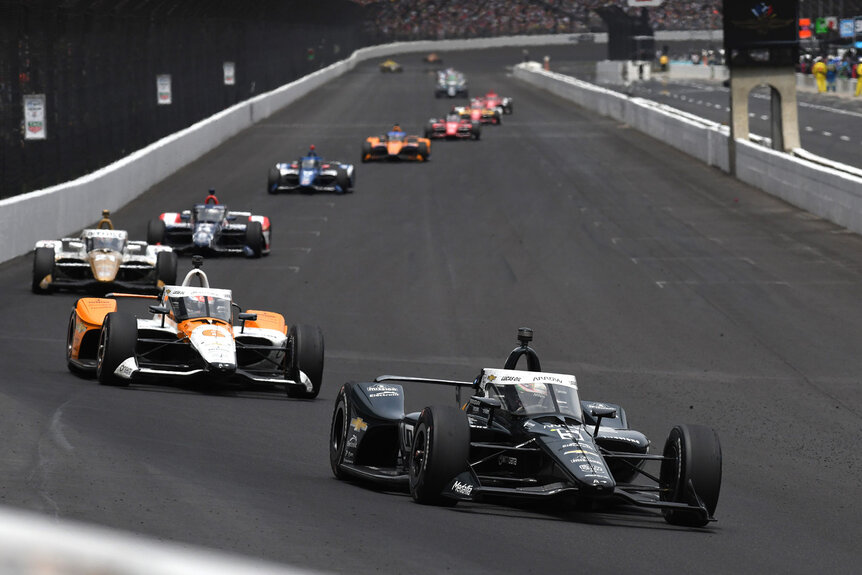
What Time Does the Indy 500 Start?
Coverage on NBC begins at 11 a.m. ET, with the race officially slated to start at approximately 12:45 p.m. ET. Historically, the race takes around three hours.
In other words, clear your Memorial Day Sunday schedule now; tell the family you'll be locked in to NBC until mid-afternoon!
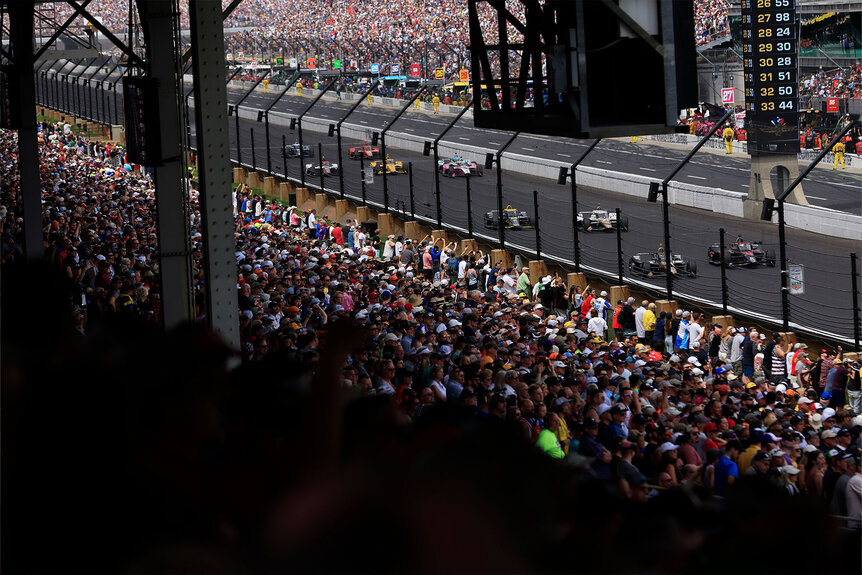
Where Does the Indy 500 Take Place?
Fittingly, the Indianapolis 500 takes place at the world-famous Indianapolis Motor Speedway in (you guessed it) Indianapolis, Indiana.
Constructed in 1909, the Indianapolis Motor Speedway was the first American racetrack to be coined a "speedway." Boasting more than 250,000 seats, the venue is the ideal place to take in the most prestigious event in IndyCar racing.
RELATED: Why We Don't Know Yet If Caitlin Clark Will Be on Team USA for the 2024 Olympics
How Many Laps is the Indy 500?
Contrary to what casual fans may believe, drivers do not make 500 revolutions around the track during the Indy 500. The Indianapolis 500 consists of 200 laps. That's right; the Indy 500 is named after the number of miles each driver must complete before being crowned the winner, not the number of laps.
Drivers knock two-and-a-half miles off their to-do list every time they complete a lap at the Indianapolis Motor Speedway. It's simple, straightforward, and representative of the nature of Indycar racing: it's a no-frills race to the finish that's easy to understand, watch, and cheer on.
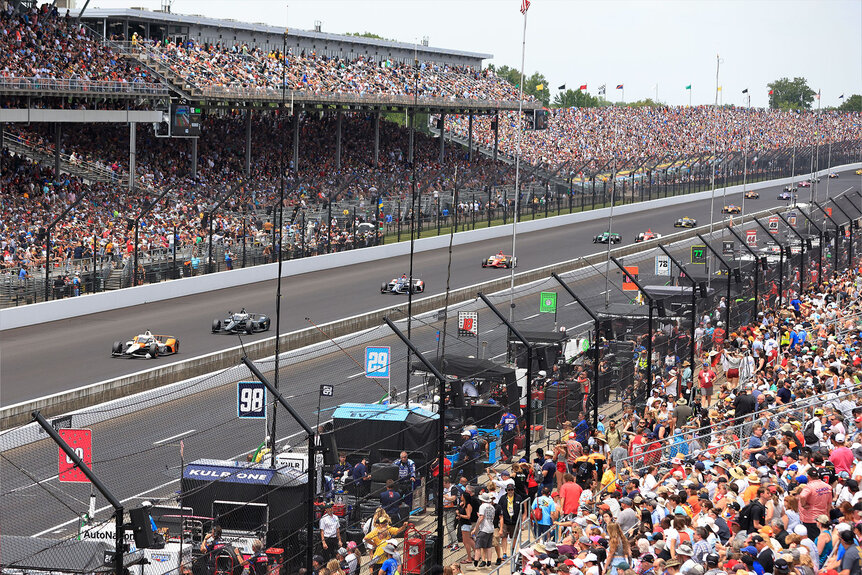
Who Has Won the Indy 500?
Over the race's 107-year history, 75 different drivers have taken home the checkered flag. Last year, American Josef Newgarden won the Indianapolis 500 in a thrilling finish over Sweden's Marcus Ericsson. This tiny bit of trivia is important because, in 2022, Ericsson won the entire thing – and ultimately couldn't run it back in 2023.
Ericsson aimed to be the first person since Hélio Castroneves in 2001 and 2002 to be a back-to-back Indy 500 winner. (Who knows, though? Perhaps he can win two races in three years with another dominant performance in the 2024 race.)
Notable past winners include IndyCar legends like Mario Andretti (1969), Al Unser (1970, 1971, 1978, and 1987), and his son, Al Unser, Jr. (1992 and 1994).
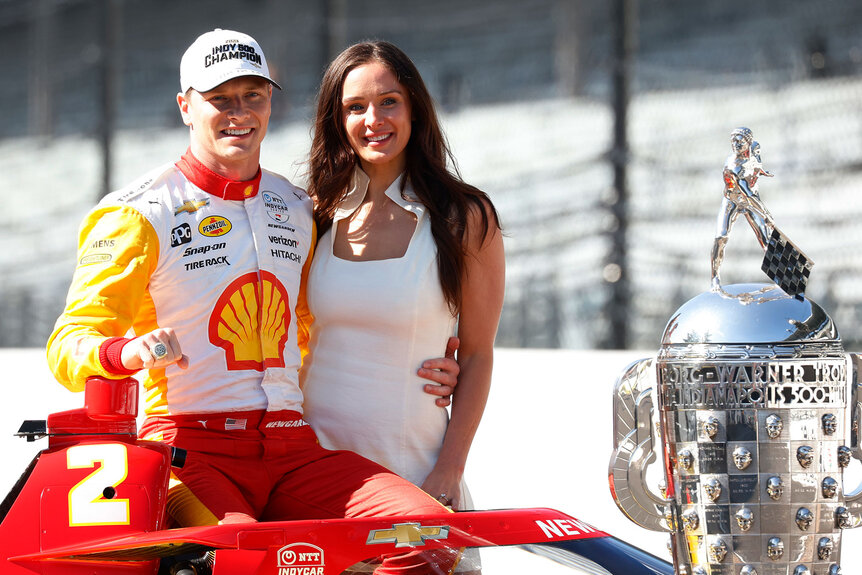
Who Are the Top Contenders For the Indy 500?
Even though a race like the Indianapolis 500 is increasingly difficult to predict (especially in the ultra-competitive modern era of IndyCar), there is still a general consensus of which drivers are favored to win this year's event.
Spain's Alex Palou , Mexico's Pato O'Ward , and the U.S.'s Josef Newgarden are the consensus betting favorites to win the checkered flag, and for good reason.
Palau is the IndyCar Series 2021 and 2023 champion, and he would love nothing more than to add an Indy 500 win to his already impressive trophy case. O'Ward, 24, is regarded by many as the future of IndyCar racing, and many believe it's only a matter of time before he captures a coveted Indianapolis 500 victory. Newgarden was Series champion in 2017 and 2019 – which feels like an eternity ago. A second consecutive win at the Indy 500 would catapult him back into the spotlight, where many racing fans think he belongs.
Is Kyle Larson Racing in the Indy 500?
Fans of one of the most popular NASCAR drivers on the planet will be happy to know that Kyle Larson will be in the field of 33 at the Indy 500 on May 26. In 2023, Larson completed the IndyCar rookie orientation program and qualified for the Indy 500, officially entering rarefied air.
Larson has a busy day planned for May 26 – he'll be attempting the legendary Memorial Day "Double," which involves racing in the Indy 500 in the early afternoon, followed by competing in NASCAR's Coca-Cola 600 in Charlotte, North Carolina, later that day. (Yes, it's as unbelievable as it sounds, but that's how Larson operates!)
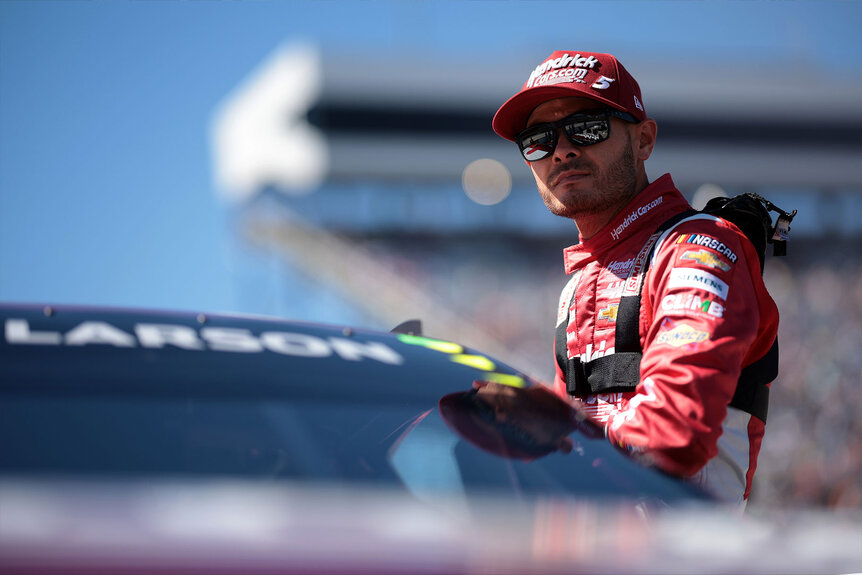
Only five drivers in racing history can boast of completing the Memorial Day "Double" – although none have won the Indy 500. On May 26, Larson looks to take his place in the history books as the rare NASCAR driver to win the Indianapolis 500. It's a win-win for racing, regardless of what genre you cheer for. For those wondering, Larson is not only aware of the immense pressure on his shoulders during Memorial Day weekend, but he's embracing it wholeheartedly .
An Indy 500 victory by a driver primarily known for his NASCAR prowess would rock the racing world to its core, to say the least. (In other words, get your DVRs ready, race fans!)
How to Watch the Indy 500
Race fans have two fantastic options to watch the flagship event of the 2024 IndyCar Series, the Indianapolis 500: live on NBC or live on Peacock .
Since 2019, NBC has been the official home of the event known as "The Greatest Spectacle in Racing," and the 2024 iteration promises more of the trademark nonstop action the IndyCar Series is known around the globe for.
Remember, although the official race is Sunday, May 26, Indianapolis 500 qualifying coverage – including determining the starting grid of the big race itself – begins a week earlier, at 3 p.m. ET on Sunday, May 19, on NBC and Peacock . Hardcore fans know that the drama doesn't begin at the start of the Indy 500, but during the qualifying coverage!
Now that you have all the information you need, there's nothing left to do except secure the most comfortable spot on your living room couch on May 26. Our guts tell us it will be a race for the ages.
Related Stories

Kristi Yamaguchi Praises Basketball Player Caitlin Clark
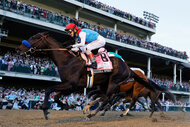
The Long and Glorious History of the Kentucky Derby

What Is Broomgate? New Podcast Explores Curling Scandal
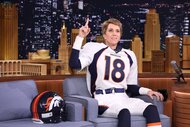
Kristen Wiig Tries to Throw Like Peyton Manning
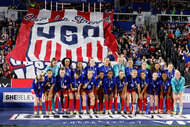
Who Will Be on the U.S. Women's Olympic Soccer Team?

How Big is An Olympic Swimming Pool? We've Got Answers

All About Tennis Player Coco Gauff and Her Family

Jimmy Fallon, Justin Timberlake & Anthony Anderson Botched This Elvis TikTok Trend
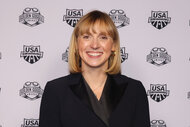
All About "Unbelievable" Olympic Swimmer Katie Ledecky
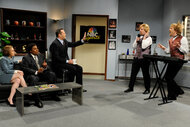
SNL's Roundball Rock Sketch Amps You Up for the NBA Playoffs

All About Rapper and Olympic Commentator Snoop Dogg

Allyson Felix Announces the Birth of Her Second Child
Recommended for you.
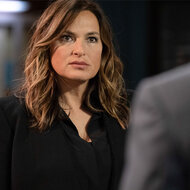
2-Year-Old Mariska Hargitay Appears on the Merv Griffin Show
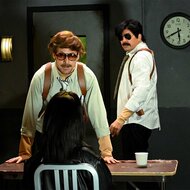
Ryan Gosling and Jimmy Fallon Deserve Oscars for Playing Identical-Looking Tough Cops

Scarlett Johansson Matches Katie Britt's SOTU Energy in SNL Parody: Watch

The Race Is On With Tag Heuer's Latest Indy 500 Watch
The Indianapolis 500, held annually at the Indianapolis Motor Speedway in Speedway, Ind., is one of the oldest automobile races in the world. Moreover, the 500-mile race is one of the most highly attended single-day sporting events in the world, with tailgate parties stretching for miles along the roads leading to the track. Tag Heuer has served as the official timekeeper of the automobile race since 2004 and also sponsors Alexander Rossi, who won the 2016 Indy 500 and serves as a brand ambassador.
The Swiss timepiece brand has a long-standing relationship with the sport of motor racing, including partnerships with other prestigious races around the world. Tag Heuer has been consistently releasing Indy 500 watches for the last few years, and this time around, the brand is tapping into the adrenaline and thrill of the sport - and its own sports heritage - to create a limited-edition timepiece for both racing lovers and watch connoisseurs alike.
In celebration of its 20-year anniversary as the official timekeeper of the race, Tag Heuer is releasing the Formula 1 Chronograph x Indy 500 watch, a 43mm timepiece designed in collaboration with the Indycar team.
Some of the features of the new timepiece include a quartz chronograph movement, a black-grained dial with distinctive printed Arabic indexes, bold red highlights and the iconic Indy 500 logo featured on the 6:00 chronograph subdial. The timepiece, which is water resistant up to 200 meters, is equipped with three subdials: at 3:00 with a permanent second indicator, at 6:00 with a minute chronograph counter, and a 9:00 chronograph counter, with a date window at 4:00.
The stainless steel case showcases its racing DNA with a red-lacquered 2:00 pusher and mythical "wings and wheels" logo engraved on the screw-down case back. The aluminum black fixed bezel sports the "Indy 500" inscription with "500" perfectly positioned on the tachymeter scale. The watch's case back is also engraved with the logo and the words "special edition."
This timepiece will retail for $2,400 and is available now online and at Tag Heuer boutiques. Rossi will also be sporting the watch on his wrist during the race.
More from WWD
- 17 of the World's Most Expensive Watches and Timepieces: Princess Diana's Cartier Ticker, James Bond's Omega Seamaster and More Worth Millions
- EXCLUSIVE: Piaget Taps Ella Richards, Lee Jun-ho, Apo Nattawin


- Nate Ryan ,
- +1 More
- Bruce Martin ,

- Dustin Long ,

- OlympicTalk ,

Trending Teams
Friday 5: nascar all-star, indy 500 qualifying schedules complicate kyle larson’s plans.
- Dustin Long
Kyle Larson could face some complications next month when he seeks to qualify for the Indianapolis 500 and compete in the NASCAR All-Star Race on the same weekend.
NASCAR revealed the format and schedule this week for its May 17-19 All-Star weekend at North Wilkesboro Speedway.
“We’ve been waiting for these schedules to come out,” Jeff Gordon, vice chairman at Hendrick Motorsports, told NBC Sports’ Nate Ryan this week. “Now that the All-Star schedule came out, it didn’t do us any favors, I can tell you that.”
A significant change is that the Saturday heat races (May 18) at North Wilkesboro are scheduled to begin two hours earlier than they did last year. The first heat race is scheduled for 5:20 p.m. ET and the second is scheduled for approximately 6:15 p.m. ET.
Why do those earlier start times matter?
Larson will seek to qualify for the Indianapolis 500 that day. Qualifying is scheduled from 11 a.m. - 5:50 p.m. ET. Provided there are no delays, Larson should have plenty of time to earn a spot in the field before he will have to leave for North Wilkesboro.

- John Newby ,
What if there is a delay at Indy or another issue that prevents Larson from qualifying before he would need to go to North Wilkesboro?
“We don’t have all the answers yet,” Gordon said. “A lot of it is between Kyle and (crew chief) Cliff (Daniels) and Rick Hendrick. Certainly I will weigh in on those things.
“We chose to do this, so that means that we want to do it the best we possibly can. Right now, I’d say the priority is that you’ve got to make the race. There’s just too much invested. Whatever it takes to make sure that that car and Kyle are starting the race for the Indy 500 .”
That’s not expected to be an issue for Larson and his Arrow McLaren team. Other questions are raised should Larson be among the fastest in qualifying.
If Larson is among the top 12 qualifiers at the end of that Saturday, he’ll be eligible to take part in Sunday’s session. The 12 fastest qualifiers make another run from 2-3 p.m. ET. The top six advance to the next round. They will make another qualifying attempt that day, going for the pole between 5:15 - 5:45 p.m. ET.
If Larson is among the fastest six, he faces another issue. The All-Star Race is scheduled to begin at 8 p.m. ET at North Wilkesboro that Sunday. Larson is the defending winner.
So what happens then?
“The next priority to me is whatever is on the Cup schedule,” Gordon said. “The All-Star Race, I think Kyle is probably more leaning towards, ‘There’s a million dollars up for grabs. I won this race last year. I can win it again. I don’t care where I have to start. I’m going to be there for that.’
“Where he qualifies in the Indy 500, I don’t know if that is as critical to him as being in the Indy 500 vs. what priorities there are on the NASCAR side. We’re still working through a lot of those logistics. Now that we have the schedule, we can start creating the priorities.
“You just can’t forget at the end of the day, he’s a full-time NASCAR driver and there are races to win and a championship to win and a team that is dedicated to that. I know that Kyle gets that. He’s going to make sure that he puts the effort in to show that team where his heart is at at the end of the day.”
2. Attention to detail
This past weekend at Talladega showed the detailed work teams do away from the track and how it can impact a race.
Toyota and its teams devised a plan that saw seven of its cars pit in the final stage once they were in their fuel window to make it to the end of the race. That put those seven in position to move ahead of the field when everyone else pitted. Even with some of those Toyotas wrecking, the strategy put Tyler Reddick in position to win last weekend’s race .

Here is an example of the detail that is examined. Knowing the plan was to pit early in the third stage, the Toyota cars arranged themselves in the back of the field in the order that they would pit.
That meant that the car leading the group was the one that had the furthest to go before reaching its pit stall (closest to pit exit). The last car in the group was in the pit stall closest to pit entrance.
That’s why the Toyotas entered pit road with Erik Jones leading. He was in pit stall 3, which was the closest to pit exit. He was followed by Bubba Wallace (pit stall 8), John Hunter Nemechek (pit stall 10), Ty Gibbs (pit stall 12), Reddick (pit stall 26), Martin Truex Jr. (pit stall 37) and Denny Hamlin (pit stall 41, the closest to pit entrance).
Why did the teams make sure they were in that order before pitting?
That allowed each driver to pull into their pit stall without having to go around another car — which would have taken more time. That could have separated the cars as they exited pit road, diminishing their speed since they would not all be in a single-file group and lessen their advantage on the rest of the field.
By being able to drive unimpeded into their pit stall, the cars saved time, exited pit road smoothly and regrouped quickly to chase the main pack.
Another key detail about pit stops was shared this week on SiriusXM NASCAR Radio’s “Late Shift” by Mike Kelley, crew chief for Ricky Stenhouse Jr.
Kelley noted that the team learned a lesson in its qualifying race at Daytona in February. Stenhouse led 15 of the first 26 laps but had to pit sooner than most other Chevrolet teams because he burned more fuel leading.
“We had led too much and pushed too hard and realized that our friends and our pals that we thought were going to work with us didn’t want to come as early as I needed to come and it put me on an island by myself,” Kelley said on SiriusXM NASCAR Radio.
“From that point forward, we put a big effort in saying, ‘Hey, let’s be the guy that saves the most.’”
Stenhouse didn’t lead a lap last weekend at Talladega and scored his first top-five finish of the season, placing fourth.
Another key detail Kelley shared on SiriusXM NASCAR Radio was how to make a fuel-only pit stop quicker.
He noted that if they need three seconds of fuel, he will tell Stenhouse to go after two seconds. Kelley explained that by the time he tells Stenhouse to go and his driver puts the car in gear to leave, three seconds of fuel will have flowed into the car before the can is disconnected.
“We know we can always call it basically a second faster than you actually need,” he said.
3. The bigger issue at Talladega, Daytona
While there was much talk about saving fuel after the Daytona 500 and last weekend’s race at Talladega, the discussion misses a bigger issue.
Drivers have talked about how challenging it is to pass at those tracks. That’s why fuel-saving is so important. More fuel saved on track means less fuel needed on pit road. Save more than others and a driver can leapfrog those cars via pit road instead of on the track.

If passing were easier for drivers, fuel saving might not matter as much. Denny Hamlin noted on his Actions Detrimental podcast this week just how difficult it is to pass at Talladega and Daytona.
“You cannot afford to get out of line,” he said. “If you get out of line, it’s over. The reason that is is that these cars have a ton of drag.”
He noted that when a car pulls out of line, the drag on the car makes it feel as if it is “pulling a dragster parachute when you’re done with your run. The car stops immediately because it’s so heavy on drag.”
That’s made Daytona and Talladega track position races.
“At no point do you want to lose track position and that’s what has really changed over the last couple of years, especially with this Next Gen car,” Michael McDowell said of racing at a superspeedway last weekend. “It is hard to go from the back to the front. So if you are safely in the top five or eight, you really want to stay there, and a lot of times you have to drive and fight really hard all day long to stay there.”
As NASCAR looks to tires that wear more to help short track racing, series officials likely will look to aerodynamic changes with the car to help make it easier for drivers to pass. Tire changes, such as the option tire being used for next month’s All-Star Race, is not in the plans for bigger tracks.
“I think you have to be extremely cautious about what you do when you get into the superspeedways and the intermediate speedways,” Greg Stucker, Goodyear’s director of racing, said this week on “The Morning Drive” on SiriusXM NASCAR Radio, noting the speed at the bigger tracks.
4. A look ahead
After having three of the first 10 races on short tracks and another three on drafting style tracks, the NASCAR Cup Series will focus on intermediate tracks after this weekend’s race at the 1-mile Dover Motor Speedway.
The series then heads to the 1.5-mile Kansas Speedway and follows that with a visit to the 1.366-mile Darlington Raceway. After running the All-Star Race at North Wilkesboro Speedway (0.625 miles), the series holds the Coca-Cola 600 at the 1.5-mile Charlotte Motor Speedway on Memorial Day weekend.
This will be a key period for teams. After Charlotte, the series doesn’t go to another 1.5-mile track until the playoffs. Three of the 10 playoff races are at 1.5-mile tracks, including a return visit to Kansas on Sept. 29.
Also, the regular season ends this year at Darlington Raceway for the Southern 500, so the May race there will prove valuable.
5. This and that …
Ten races into this season, Chris Buescher has 245 points. He had 240 points at this time a year ago. He’s 16th in the season standings, just as he was last year. The difference is that last year he held the final playoff spot. This year, he’s the first driver outside a playoff spot.
Hendrick Motorsports and Joe Gibbs Racing have combined to claim nearly 40% of the top-10 finishes in the first 10 races of the year and 50% of the top-five finishes this year. Next is 23XI Racing, which has scored 14% of the top fives and 11% of the top 10s.
Ryan Sieg will seek to win the Dash 4 Cash $100,000 bonus for the second week in a row. He’ll race against Jesse Love, Anthony Alfredo and Riley Herbst this weekend at Dover for the prize.
Xfinity driver Sam Mayer has failed to finish eight of the last 17 races due to an accident. In the nine races he’s finished in that stretch, he has seven top 10s, including three wins.
Your browser is not supported for this experience. We recommend using Chrome, Firefox, Edge, or Safari.
- Partnership
- Indy's Destination Vision
- Privacy Policy
Plan a Meeting
Sign up for trip ideas, opportunities to receive prize packs, and more!
Indy Racing Experience
The Indy Racing Experience offers the thrill of a lifetime by putting race fans in real IndyCar machines and speeding around the historic Indianapolis Motor Speedway. Thrill seekers can ride in a custom two-seat IndyCar or get behind the wheel and drive a car that actually competed in the Indy 500.

You Might Also Like:
The children's museum, conner prairie, eiteljorg museum, indiana historical society, indiana state museum, indianapolis motor speedway museum, indianapolis zoo, ndy sculptures, monuments memorials.
Day two of the Little 500; 'World's Greatest College Weekend'

IMAGES
COMMENTS
Seniors (62+): $14. Youth (6-15): $8. Children (0-5): $2 with First Child FREE. The Museum also offers a variety of Track Tours that go "behind the scenes" at the legendary Indianapolis Motor Speedway. These exclusive tours are a once-in-a-lifetime opportunity to learn about racing history and experience the Speedway like never before.
Plan Ahead For Your Visit To The Indianapolis Motor Speedway. All The Information You Will Need For Race Weekend. Schedules, Parking, Camping, Directions, Maps And More. ... Indianapolis 500 presented by Gainbridge May 14-26 | INDYCAR; Sonsio Grand Prix May 10-11 ... View important track details including parking, gates, seating, attractions ...
Visit Indianapolis 500 presented by Gainbridge. Indy 500 Plan Ahead. Getting Here. Getting Here; Directions & Traffic Patterns; ... View important track details including parking, gates, seating, attractions, and amenities. Visit ... Indy 500 Community Initiatives Find ways to celebrate the Month of May in your backyard;
On days that we are also running View from the Top Tours, the oval and Yard of Bricks will be in use and unavailable to visit on Golf Cart Tours. Tour Pricing. Adults: $55. Youth (12-15): $35. Must Be 12+ to Participate. Schedule a Tour. Email: [email protected]. Call: 317-492-6747 | Day of 317-492-6784.
Experience the World of Motorsports like never before! Our exclusive, behind-the-scenes tours give you backstage access to the Indianapolis Motor Speedway and its legendary landmarks. While walk-in tour purchases are welcome, reservations are highly recommended. Tour schedules are subject to change without notice due to weather or track activity.
The Indianapolis Motor Speedway also is known as "The Greatest Race Course in the World." Nestled in Speedway, Indiana, just minutes from downtown Indianapolis, IMS is most known globally for hosting the largest single-day sporting event in the world, the Indianapolis 500, every Memorial Day weekend. The Indianapolis Motor Speedway also hosts the Verizon IndyCar Series, NASCAR, LPGA and ...
Inside the oval at the southern end of the track, the Indianapolis Motor Speedway Museum is a good place to orient and educate yourself about all things IndyCar; displays detail IMS history and exhibits boast race cars past and present. Make sure to marvel at the esteemed Borg-Warner Trophy featuring the carved faces of winning Indy 500 drivers.
Indianapolis 500 presented by Gainbridge May 14-26 | INDYCAR; Sonsio Grand Prix May 10-11 ... Visit Indianapolis 500 presented by Gainbridge. Indy 500 Plan Ahead. Getting Here. Getting Here; ... View important track details including parking, gates, seating, attractions, and amenities. Visit
The gift shop is stocked with IMS and Indy 500 merchandise. Track Tours — a variety of track tours are available on days when the track is not in action (call ahead to confirm schedules.) Hop a shuttle bus for a narrated Track Laps drive around the 2.5 mile banked oval. ... NCAA Hall of Champions — no Indy sports tour is complete without a ...
The following gates are open for Indianapolis 500 Practice May 14-17 & May 20: Gate 1, Gate 2, Gate 3, Gate 4, Gate 6, Gate 7, Gate 9, Gate 10 and Gate 12. Available Parking. Free parking for Indianapolis 500 practice is located in the IMS infield. Enter through Gate 10 from 30th Street or through Gate 2 from 16th Street.
Printable IMS map for Indy 500. Below is a printable map of the Indianapolis Motor Speedway for the day of the race.. To print, click the 'pop out' button in the top right corner, then use the ...
The 108th Running of the Indianapolis 500 presented by Gainbridge is scheduled for Sunday, May 26, 2024. ... Visit Indianapolis 500 presented by Gainbridge. Indy 500 Plan Ahead. Getting Here. Getting Here; ... View important track details including parking, gates, seating, attractions, and amenities. Visit
Indianapolis 500 Day After Photo Shoot - Monday, May 30, 2021. May 30, 2022. 106th Running of the Indianapolis 500 Presented By Gainbridge - Sunday, May 29, 2022. May 29, 2022. Legends Day presented by Firestone - Saturday, May 28, 2022. May 28, 2022. Miller Light Carb Day - Friday, May 27, 2022. May 27, 2022.
Plan Ahead For Your Visit To The Indianapolis Motor Speedway. All The Information You Will Need For Indy 500 Race Weekend. Schedules, Parking, Camping, Directions, Maps And More. ... View important track details including parking, gates, seating, attractions, and amenities. Visit ... Indy 500 Community Initiatives Find ways to celebrate the ...
The Racing. Cars are on the track at the Indianapolis Motor Speedway for most of May. Whether or not you make it to the Indy 500, there are plenty of opportunities to see cars circle the famed speedway. 108th Running of the Indianapolis 500: May 26, 2024 - Thirty-three drivers. 200 laps. 500 miles. One bottle of cold milk.
The Indianapolis Motor Speedway is a motor racing circuit located in Speedway, Indiana, an enclave suburb of Indianapolis, Indiana.It is the home of the Indianapolis 500 and the Brickyard 400 and formerly the home of the United States Grand Prix and Indianapolis motorcycle Grand Prix.It is located six miles (9.7 km) west of Downtown Indianapolis. ...
Plan Your Visit. Tickets to the Indy 500 can be purchased through the Indianapolis Motor Speedway box office and their seasoned experts can guide you to the right seat for your needs. Plan for early morning arrival to navigate traffic and find parking in nearby lots and yards. By 10:30 am the starting grid is lined up and shortly thereafter pre ...
SCHEDULE THE THRILL OF AN INDYCAR RIDE AT 180 MPH ON THE FAMED IMS-INDY 500 OVAL! (ALL 2024 RIDE DATES LIVE NOW!) Racing Dreams Do Come True. The only IndyCar experiences at the world famous Indianapolis Motor Speedway ... We are the exclusive Racing Experience at the famed Indianapolis Motor Speedway and offer Racing Experiences at every NTT ...
The Museum is open for school tours on Tuesdays, Wednesdays, and Thursdays from 10 AM - 3 PM. Three weeks notice is required, and a maximum of 150 students are allowed per day. Please contact [email protected] or call 317-492-6747 for help scheduling your visit.
The Indianapolis 500, formally known as the Indianapolis 500-Mile Race, and commonly called the Indy 500, is an annual automobile race held at Indianapolis Motor Speedway (IMS) in Speedway, Indiana, United States, an enclave suburb of Indianapolis.The event is traditionally held over Memorial Day weekend, usually the last weekend of May. It is contested as part of the IndyCar Series, the top ...
The Indianapolis Motor Speedway was only two years old in 1911; there was no false modesty on the program for the first running of the 500. IMS Photo. 24 / 24. The winner of the 1911 Indianapolis ...
The Museum is located at 4750 W. 16th Street, Speedway, IN, 46224, inside the track between turns 1 and 2. The entrance to the Museum is located at Gate 2 on the north side of 16th Street. This is marked by a black banner on the west side of the entrance. During the renovation, track tours and the IMS Retail Shop are housed in the building to ...
Here's a List of the Athletes Qualified for the 2024 Paris Olympics. Patricio O'Ward (#5 Arrow McLaren SP) Dallara IR12 Chevrolet leads teammate Felix Rosenqvist (#6 Arrow McLaren SP) Dallara IR12 ...
Moreover, the 500-mile race is one of the most highly attended single-day sporting events in the world, with tailgate parties stretching for miles along the roads leading to the track.
The 2024 Indianapolis 500, branded as the 108th Running of the Indianapolis 500 presented by Gainbridge for sponsorship reasons, is a 500-mile (804.7 km, 200 lap) race in the 2024 IndyCar Series, scheduled for Sunday, May 26, at the Indianapolis Motor Speedway in Speedway, Indiana, United States.The month of May activities will formally begin on Saturday, May 11 with the Sonsio Grand Prix on ...
This will be a key period for teams. After Charlotte, the series doesn't go to another 1.5-mile track until the playoffs. Three of the 10 playoff races are at 1.5-mile tracks, including a return visit to Kansas on Sept. 29. Also, the regular season ends this year at Darlington Raceway for the Southern 500, so the May race there will prove ...
The Indy Racing Experience offers the thrill of a lifetime by putting race fans in real IndyCar machines and speeding around the historic Indianapolis Motor Speedway. Thrill seekers can ride in a custom two-seat IndyCar or get behind the wheel and drive a car that actually competed in the Indy 500. Your guide for things to do in Indianapolis!
Phi Kappa Psi rider Hunter Jones races into turn three Saturday, April 20, 2024, during the 73th annual men's Little 500 at Armstrong Stadium at Indiana University in Bloomington. Black Key Bulls ...